

OF AIIAS
AIIAS EXECUTIVE OFFICERS
President:
Ginger Ketting-Weller, PhD
Vice president for Academic Administration:
Richard Nelson, MD/MS
Vice president for Finance:
Jorge Montero, PhD
Vice president FOR Student Services:
Robert Benjamin, MBA, MDiv
Vice president for institutional advancement:
Richard Nelson, MD/MS
Dean, Graduate School:
Kenneth Swansi, PhD
Dean, Seminary:
Ricardo González, PhD
FLAGS COMMITTEE
Ginger Ketting-Weller
Bruce Sumendap
Sharnie Love Zamora-Belarmino
Christian Rodelas
J im C Weller
Diana Razmerita
Donie Ver Medalla
Blessing Obaya
Sweeta Frans
Charmaine Ang
FLAGS EDITORIAL BOARD
Editor:
Sharnie Love Zamora-Belarmino
content Editors:
Shawna Vyhmeister
Ginger Ketting-Weller
Copy Editor:
Donie Ver Medalla
Layout & Design editor: Christian Rodelas
FLAGS , DECEMBER 2023
Volume 18, Number 2
Flags is the semi-annual international magazine for alumni and friends of the Adventist International Institute of Advanced Studies (AIIAS), a graduate-level educational institution of the General Conference of Seventh-day Adventists.
ISSN 1908-1693
GENERAL INQUIRIES
AIIAS
Lalaan I, Silang, Cavite 4118, Philippines
Phone: +63 (46) 414-4300
Fax: +63 (46) 414-4301
Email: admissions@aiias.edu
Website: www.aiias.edu
SOCIAL MEDIA
facebook.com/aiias
twitter.com/aiiasedu instagram.com/aiiasedu 09 CONTENTS CONTENTS


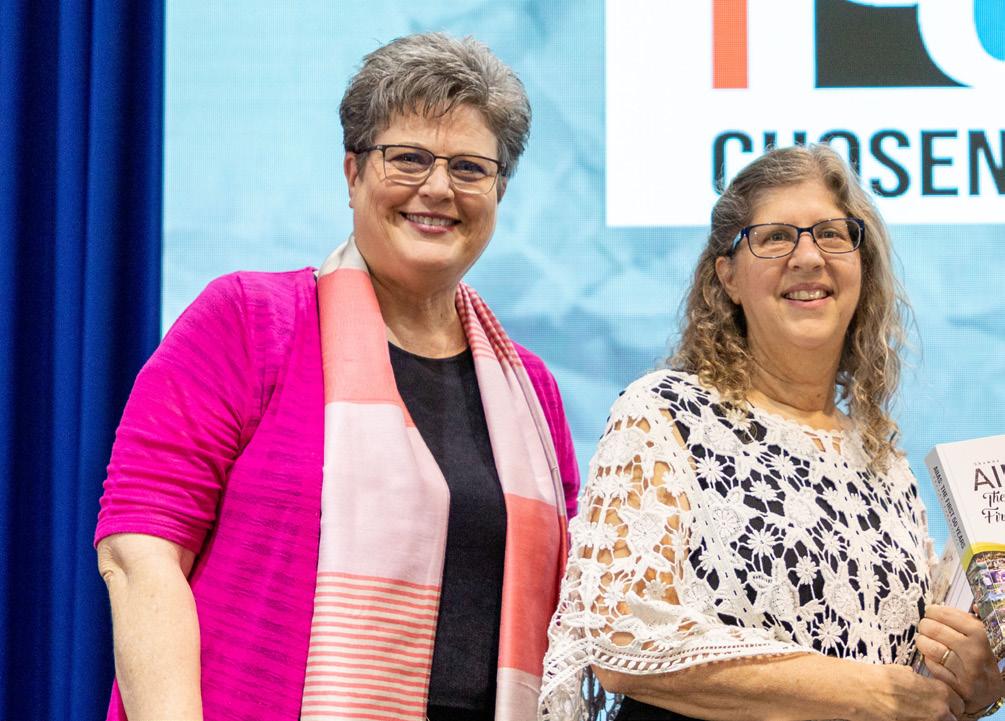

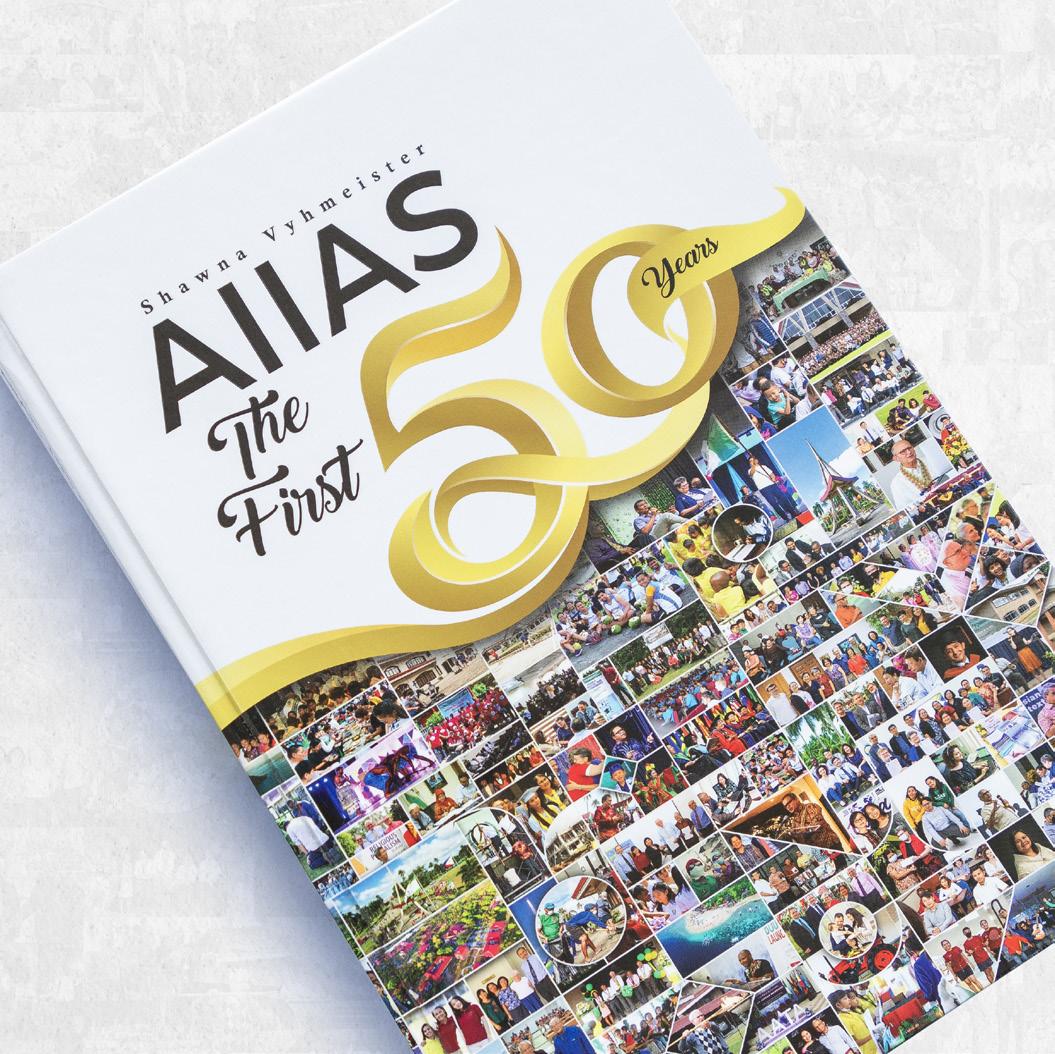
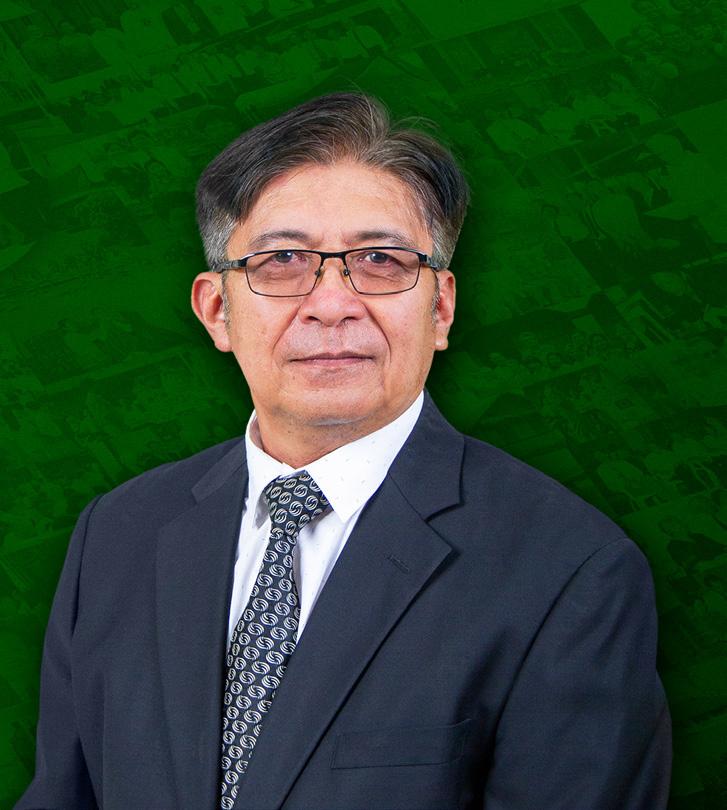
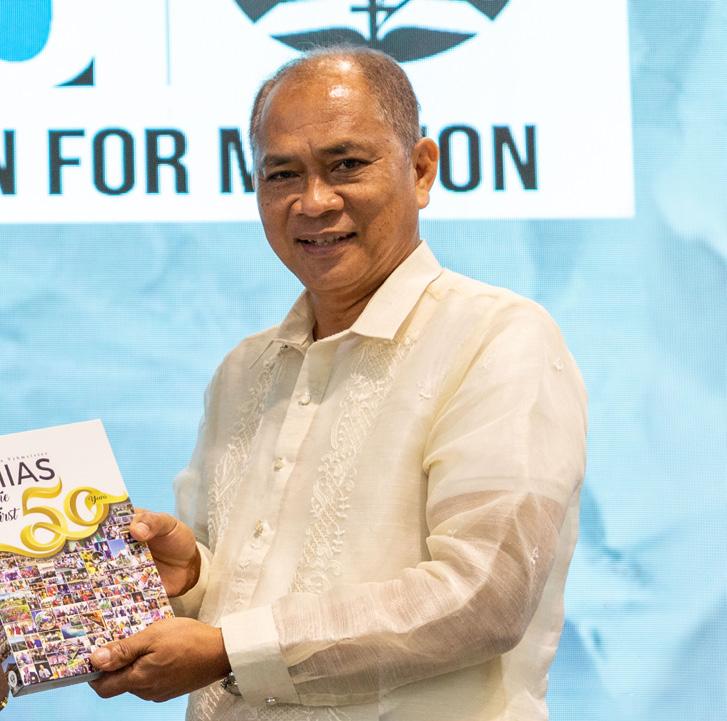
Take Root, Bear Fruit
20 AIIAS Launches its First History Book in Celebration of 50 Years of God’s Faithfulness
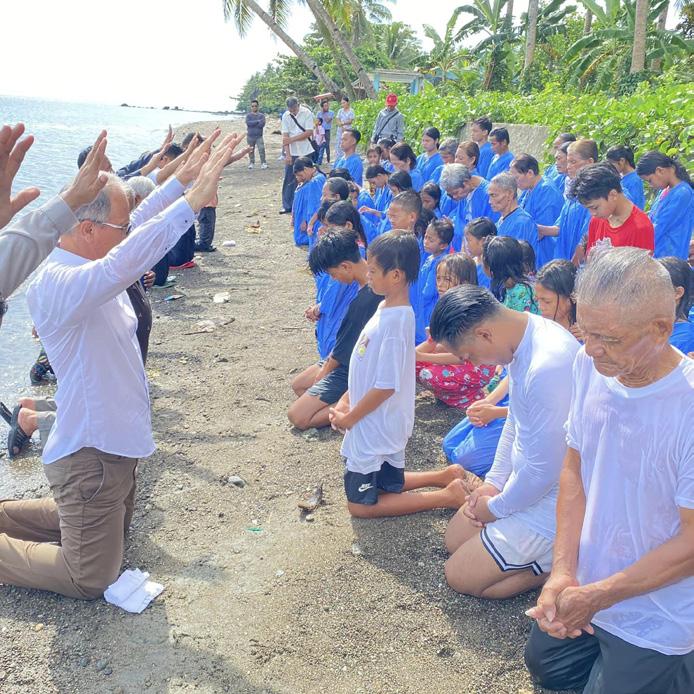
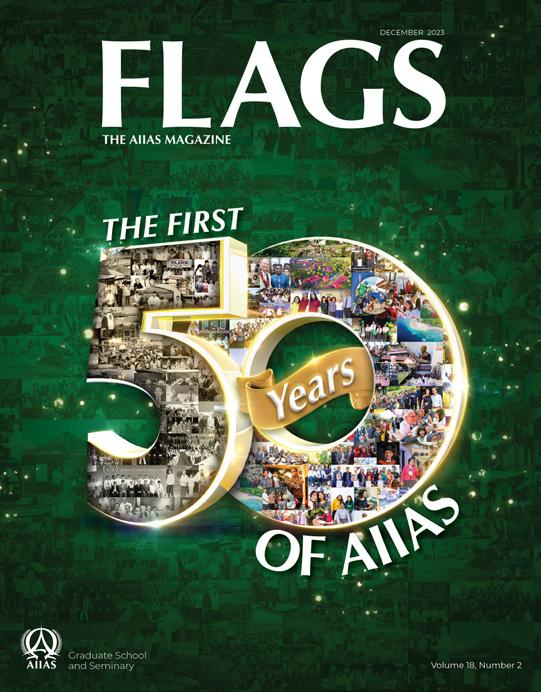
ABOUT THE COVER
AIIAS celebrates its 50th founding anniversary from its small beginnings as a graduate seminary voted into existence by the Far Eastern Division in 1972. AIIAS continues to thrive, thanks to the support of the Seventhday Adventist Church and the many people who have paved the way for the institution to strengthen in its mission. Although AIIAS still primarily serves the Asian regions, the institution develops dedicated graduates who are leaders around the world. This special issue of Flags celebrates what God has wrought for and through AIIAS over the past 50 years. You can learn more about the history of AIIAS through our recently-published 50th anniversary book, AIIAS: The First 50 Years “AIIAS, press on!”
THE PRESIDENT’S BANNER:
“Here I raise my Ebenezer; Hither by Thy help I’ve come, And I hope, by Thy good pleasure, Safely to arrive at home.”
— Robert Robinson (1735-1790)
It’s my favorite hymn, and not just because Bangkok missionary Jeanne Wiesseman used to refer to me as “Ebenezer” when I was a toddler. (The reason for that has been lost in the murk of time.) It’s because the entire hymn is about celebrating the leading and provision of God. It is a mid-story hymn, one that recognizes what we have learned and experienced up to this point, and draws upon it for the courage and faith to experience the rest of it.
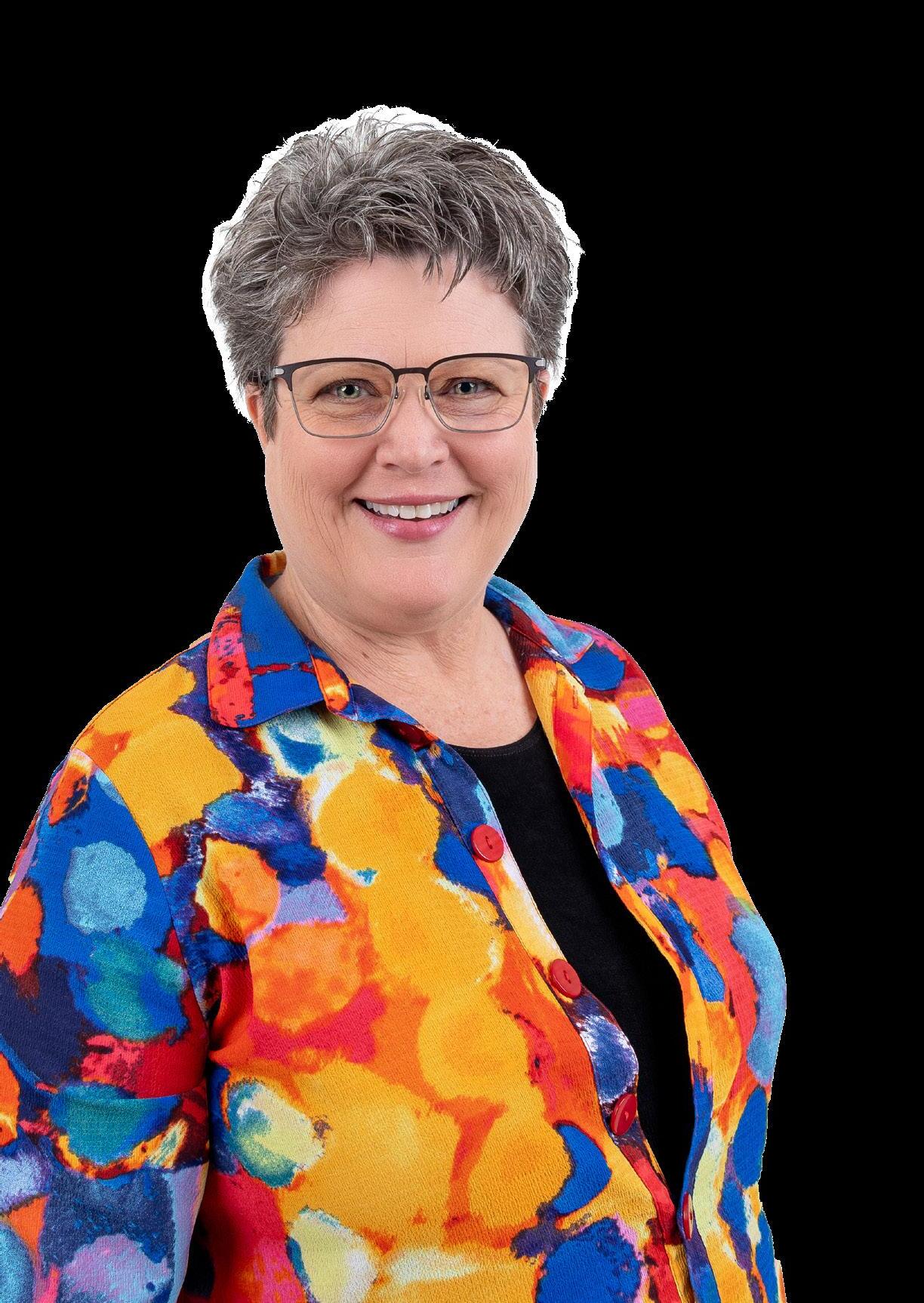

By Shawna Vyhmeister
The Real History of AIIAS
“Someone really should write the history of AIIAS.”
Ihad stayed behind to help clean up from the alumni gathering, hoping to have a moment to talk with the new president about my concern. She seemed nice enough. But also really busy. Did she understand enough about the importance of those who had gone before to invest in this sort of undertaking?
To my surprise, she responded, “You’re right. We really do need to get that written down, while many of the early contributors can still help us. Why don’t you write it?”
I hesitated. It had not occurred to me that I would be involved in any way with the documenting of AIIAS history. “You don’t even know me!” I replied. “How are you so sure that I’m the right person to put the history of AIIAS down on paper?”
Despite my reservations, I knew that this was a request I could not refuse. Freshly returned from overseas, with no job prospects yet, I needed something meaningful to do. Once AIIAS gets into your blood, you can never get it out again. I had visited the Puting Kahoy campus when my inlaws worked there during the early years. I had all their old letters. I had served with my husband and children on the Lalaan campus for over 11 years. As is my habit, I had left a paper trail all over campus: Policies, Research Standards, Strategic Plans, Bulletins, Graduation Roles and Responsibilities. AIIAS actually had large amounts
of my writing, but almost none of it had my name on it. So how could she even know what she was asking for?
She brushed aside my surprise with some omniscient comment about my reputation having lingered after my departure. We spent a few moments
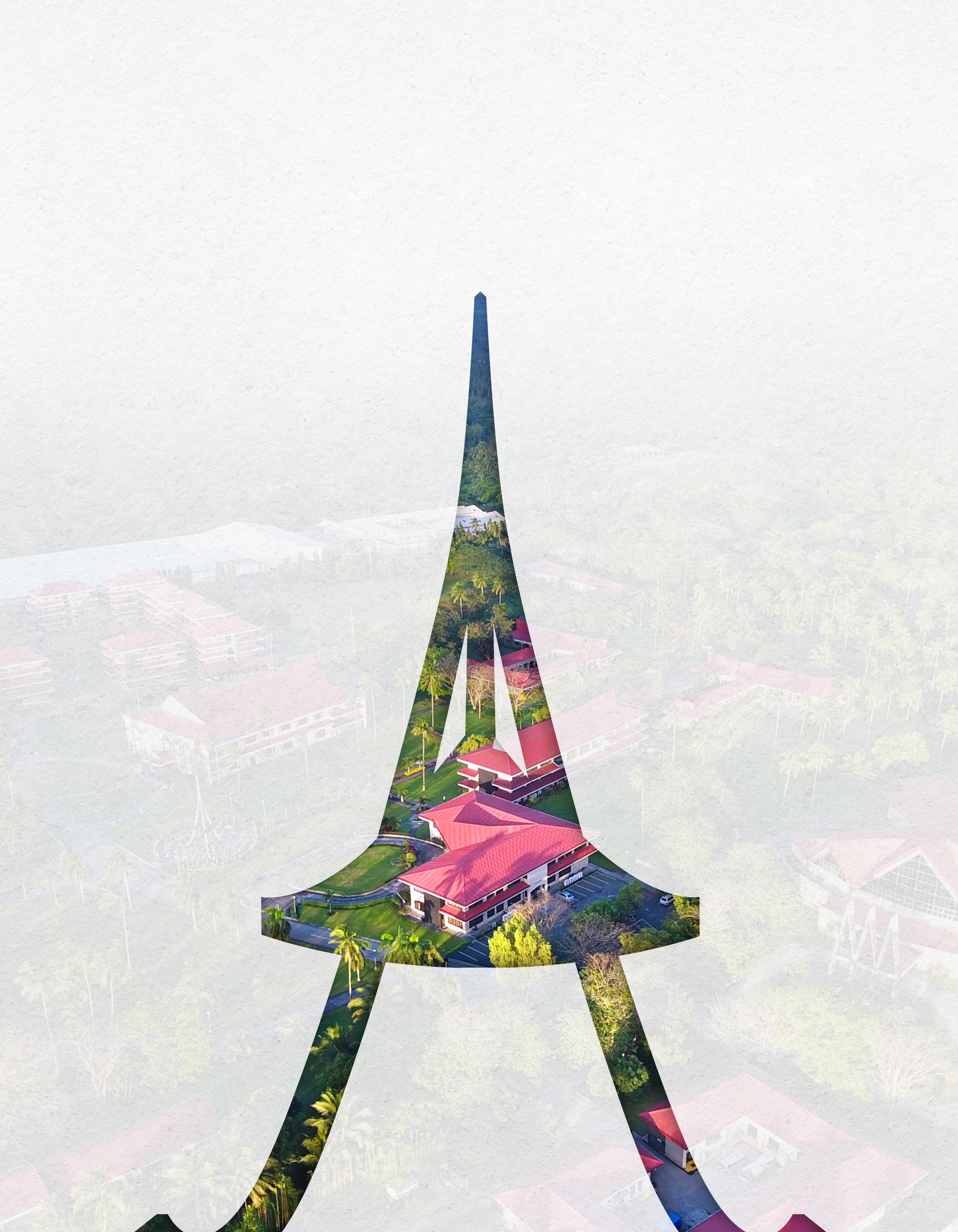
How do you summarize 50 years of miracles; of big challenges and small victories; of individual and institutional growth; of midnight oil and early morning vigils?
brainstorming: she would write a final chapter about the future of AIIAS. She would make sure that the tone and thrust of the book was in line with what she had in mind. She would work with me to sort out the actual founding date for AIIAS, which had never been established because of the institution’s complex evolution. I assured her that I would contact and interview as many retired faculty as possible. I would need access to AIIAS documents, minutes, and board actions. She promised me that this would be no problem. In 15 minutes of easy conversation, the negotiations were over.
I went home that night with my head spinning. How do you summarize 50 years of miracles; of big challenges and small victories; of individual and institutional growth; of midnight oil and early morning vigils? The task was monumental. Even if I wrote a book, how could it hold all that? There would need to be stories, pictures, timelines, historical details, personal anecdotes. Sleep did not come easily that night, or many others, as I grappled with the enormity of the task and its resistance to structure.
The research and writing process itself was pure joy. Everyone loves to talk about AIIAS. The stories flowed. The funny ones; the sad ones; friends we lost along the way; efforts that were misunderstood; times when God intervened. Of course, the book could not hold all of them. But I included as many as possible. Some moments of private pain were shared with a “don’t put that in the book.” These requests were honored. As I researched, I realized that everyone had contributed in the way they thought was best, even though they did not always agree with what the others were doing. It did not seem helpful now to detail old disappointments or disagreements. Human shortcomings were not brushed aside or glossed over, but they are not the point of this story. I chose to believe the best and document how God worked through sinful, fragile human beings to fulfill His plan.
Just over a year later, the journey was completed. I had come to know so many remarkable people through interviews about their time at AIIAS. I had met many
more through stories, publications, voted actions, and e-mails. Students sent in their miracle stories and experiences. Former faculty sent encouragement. Some read long sections of the text, correcting details and adding information. Wonderful stories emerged through the interview process. The library and the PR office worked their own kind of miracles, unearthing photographs, missing information, and answers to my incessant questions.
And there it is now; published and printed, and available to all. The history of God’s leading at AIIAS. You should get your copy and read it! When those who contributed to the book received their copies, they wrote; they called; they asked for more copies for their children. More than one told me how they had finished reading the entire book in two days, and how they were so grateful to see that their work was not forgotten, and that finally, someone had written down this incredible story.
The first half of the book details in chronological order the first 50 years of AIIAS history, from 1972 to 2022, from its inception on the Baesa campus. It briefly traces the history of PUC as it grew and developed first high school, then college, then graduate programs, and finally received permission to operate the Seventh-day Adventist Theological Seminary, Far East (SDATS-FE)—the seminary for the Far Eastern Division (FED). The book explains why the history of PUC is so important to the story of AIIAS:
After years of doubt about when AIIAS actually began, it has finally been concluded that it is appropriate to date the beginning of AIIAS from the start of the Seminary on March 23, 1972. AIIAS was born on the sister campus of PUC/AUP and developed under the care and guidance of the PUC administration during those early years. It was not fully independent until 1978 or even later, but the beginning of the Division Seminary, which to this day is one of the two schools that together make up AIIAS, is the beginning of the institution.1 (p. 22)
The book goes on to detail the growth of this FED seminary, which
was funded from the beginning by the Division, and actually run by the FED starting in 1978. With Presidential Decree 2021 in 1986, SDATS-FE broadened and became AIIAS, in order to include a Divisionrun graduate school as well as the seminary. Later in 1986, the seminary name was changed to Asia Adventist Theological Seminary (AATS)—the official name of the Seminary until today.
The story traces developments in building the “new” Lalaan campus, and successive growth and maturation that took place over time, up through the Taal eruption and COVID-19 lockdown of 2020 and beyond. There are many pictures, though space would not permit us to include as many as we would have liked.
The second half of the book looks topically at different aspects of campus life, including cultural events, miracle stories, the history of AIIAS Academy, and personal interest stories. The personal insights in this part of the book, from students and faculty alike, are among some of the most poignant and touching in the book:
• From that painful experience I learned one of the most important lessons of my life. Only God is perfect. Everyone else is like me: inconsistent, full of good intentions, but sinful, and in need of a perfect and loving God. Only God can bear the full weight of our humanity; only God is eternally strong and able to save. (p. 277)
• During one of their concerts in Indonesia, in the middle of the song We Will Serve Him, it was the choir members, rather than the audience, who broke down and cried. (p. 271)
• I would want to be remembered as someone who wasn’t so caught up in my studies that I forgot that there are people around me and a world in need of God and His love. (p. 245)
• I thought, ‘I’m going to learn something from this lady!’ And I did. When it came to flower arranging, Makiko was an
incredible mentor. . . . Over the course of the next two-anda-half years, I learned what she ultimately had to offer, which was not as much about the flowers as about myself—what I’m made of. I am grateful to her to this day.
This story was not atypical. As faculty, we learned much from our students. I recall how absorbed Larry Herr was in a Pakistani student’s coaching on how to play
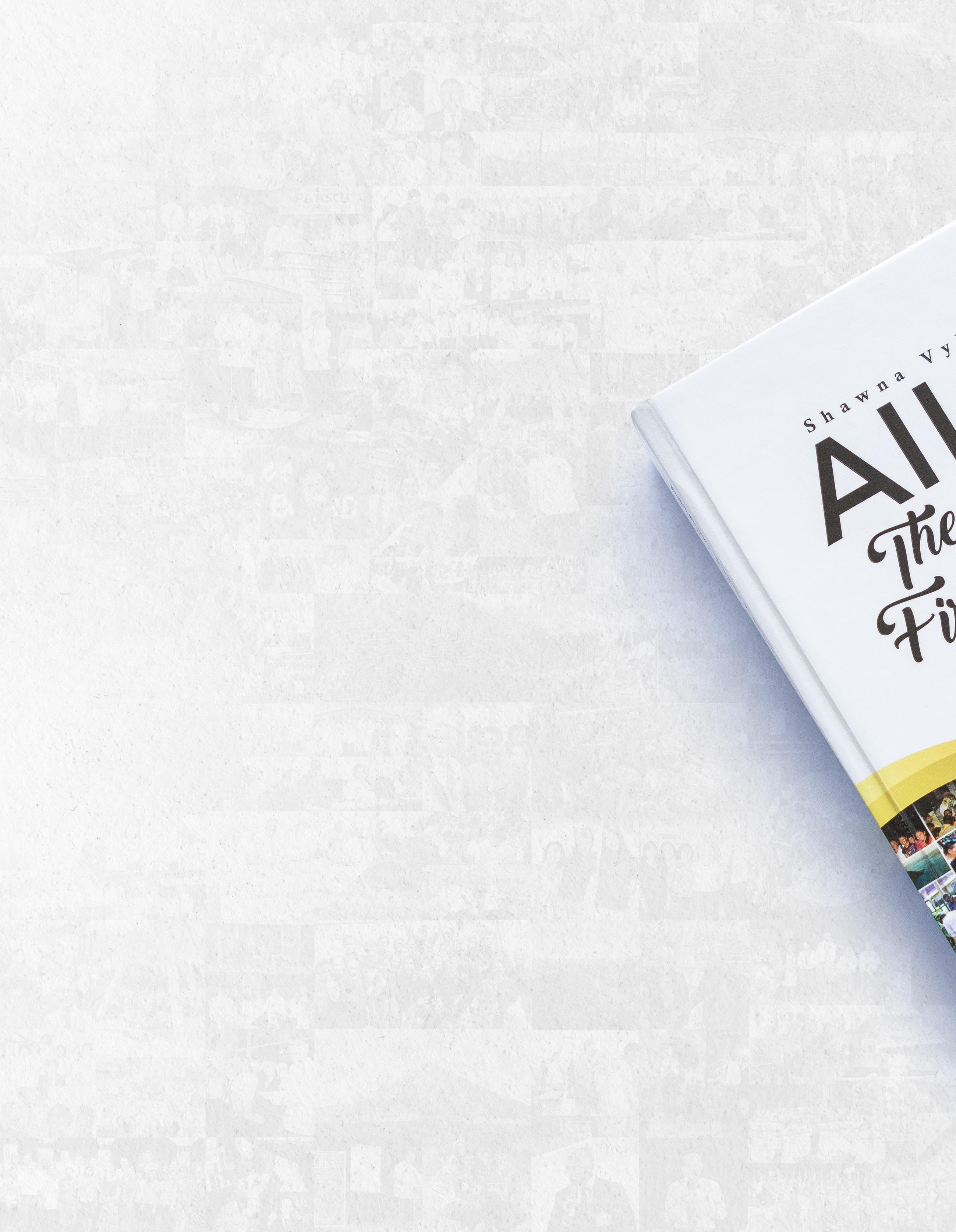
the tablas (drums). Exotic and flavorful recipes from many countries were shared all around—with instructions on where in Manila to find the diverse ingredients and how to use them. Multicultural musical groups worked hard together, no matter whose hand wielded the baton. Western teachers learned from Asian students by observing how they would respectfully and adroitly express their disagreements with one another in the classroom. Teaching was not a one-way street. We absorbed lessons and insights from one another. (p. 294)
The book then ends with a brief vision of where AIIAS might be heading in the future, concluding with the obvious:
With God, all things are possible. His hands are ever over and under [AIIAS]. (p. 304)
But the story does not end there. The real history of AIIAS is not in the book. It is in your life, as you live it every day. I have heard it said that Jesus couldn’t be everywhere at once, so He created mothers. In the same way, the spirit of AIIAS is carried to others in the lives of those who have passed through its doors and been forever changed by the time they spent on campus. AIIAS lives on in the
lives of its alumni. When you are just a little kinder than you might have been with a colleague who disappointed you, AIIAS lives on. When you are more understanding with those who are different from you, AIIAS lives on. When you are willing to go beyond the call of duty to meet the needs of the mission, AIIAS lives on. When you maintain your personal spirituality, knowing that it is the only thing that will get you through the tough times, AIIAS lives on. When you do what is right because it is right, even though no one else will ever know, AIIAS lives on.
A story from the book illustrates what this looks like in real life: One special aspect of AIIAS alumni is the invisible bond that exists between alumni when they meet. We see photos and hear stories of spontaneous “AIIAS alumni” reunions at unexpected moments. An Adventist accreditation visit in India becomes an opportunity for an AIIAS alumni gathering, and a potluck is organized so people can spend time together. At an academic meeting in Israel, photos are taken of all the AIIAS alumni present.
At an Ellen G. White Colloquium in 2018, just such a spontaneous AIIAS alumni reunion occurred.
Food and

“WetrulybelievethatGodhasplacedtherightpeopleandleadership atAIIASattherighttimetodevelopandrunittofulfillHismission forcreatingit.”—PuringandPaoringRagui
memories were shared, and stories were told. As a result, the group took to heart the needs expressed by one of the AIIAS alumni in the group. Before long, the AIIAS Leslie Hardinge Library had donated 20 reference books to the school where their new friend (they had not actually been classmates) taught in Madagascar. Another AIIAS alumnus present that day arranged for additional reference materials to be donated from the White Estate where he worked. Other AIIAS alumni organized the donation of 1,500 French books, and promised to deliver 3,000 more in the next year. Others donated clothing. In short, the alumnus felt that “AIIAS has never been so close to Madagascar.”2 (pp. 267-268)
In short, you are the real history of AIIAS. In you, AIIAS lives and breathes. In you, it shares professional expertise with the community, and the love of God with the world.
Juicy Tidbits
Read the book to find out the rest of the story!
• Then she noticed the reason it was moving: a snake was crawling up the power cord (p. 286).
• It has often been jokingly said that AIIAS is “in the Philippines, but not of the Philippines.” But anyone who knows the history knows that this is not true. AIIAS is very much born of Filipino roots, and carries the Philippines deep in its international heart (p. 3).
• Our relationship started in branch Sabbath School. . . . Several of us would go along on Sabbath afternoons, just to accompany her (p. 293).
• Then I knew, for my own satisfaction, that the Lord was on our side. God was good. He just poured out blessing after blessing (p. 275).
• The Division Seminary that was approved by FED action on March 23, 1972 has continued until today, and operates on the AIIAS campus. For that reason, AIIAS dates its existence to the start of the Seminary in 1972 (p. 22).
• Graduate students are not typically young or athletic, which is what makes the event [MiniOlympics] even more fun. Everyone plays. People put their books down, and the adults play as if they were children. . . . A good deal of fun is had by all, and many sore muscles are nursed over the next week, as most are reminded they are not as young as they used to be (p. 252).
• Today we look back and see how God had His hand over both institutions [AIIAS and PUC/AUP], even through those difficult times. . . . It is likely that neither institution could have reached its potential if they had remained together (p. 68).
• “God intervened and gave me some extra years to live” (p. 284).
• After 12 years, the ministry to the Dasmariñas City Jail had resulted in over 1000 baptisms. This ministry included connecting baptized members with pastors in their hometown upon their release so that the new members would not be lost in the transition (p. 239).
• At that moment, the leading of the Lord in the establishment of AIIAS seemed especially clear. The FED decision not to pursue the establishment of AIIAS had been overruled by the Lord (p. 72).
• Just after a rainstorm, the frogs hold “a concert during the late evening with a multipart chorus” (p. 249).
• “We were killed in Greek class but were resurrected. We are not afraid of Greek anymore” (p. 286).
• Then the stranger jerked off his cap and glasses, and the situation changed. Danny immediately recognized him as his elder brother! (p. 278).
• So that problem disappeared. It was solved immediately: God took care of it (p. 87).
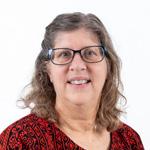
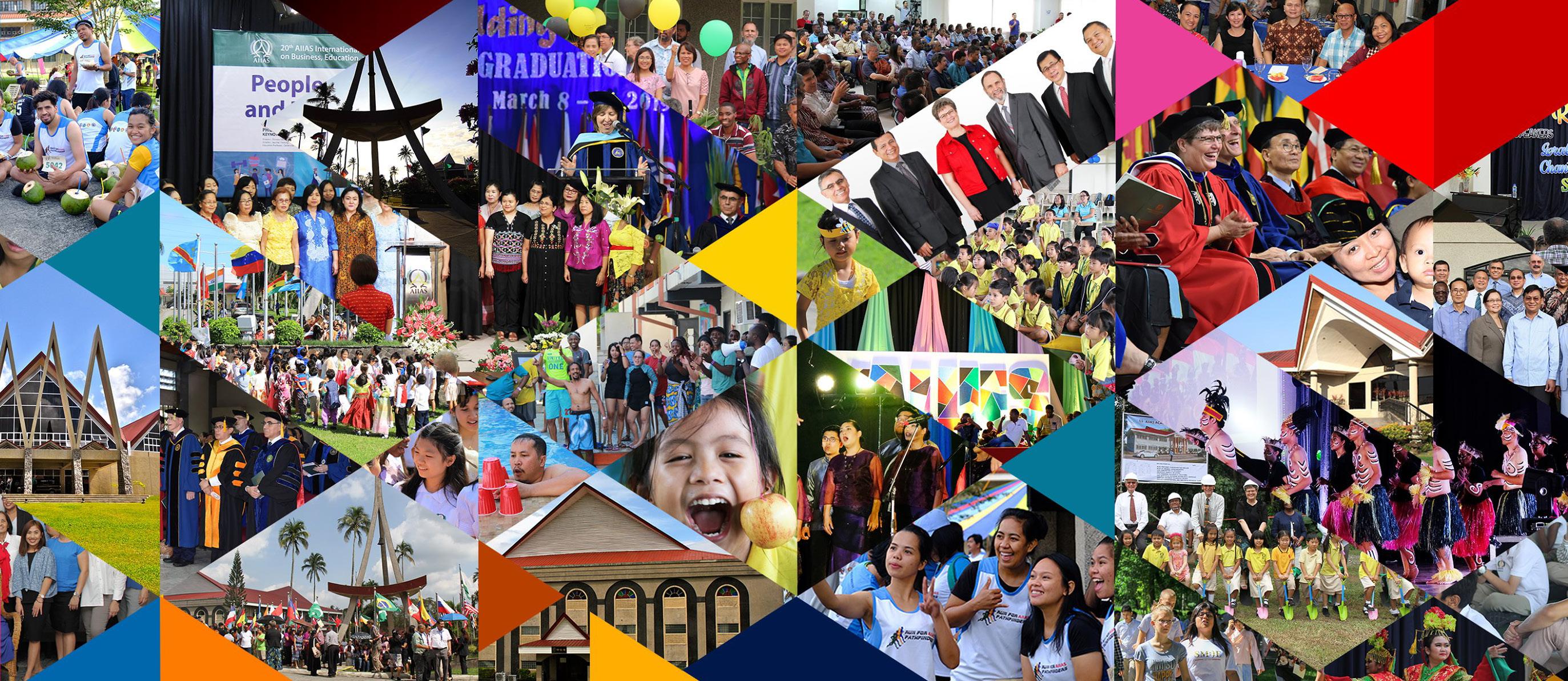
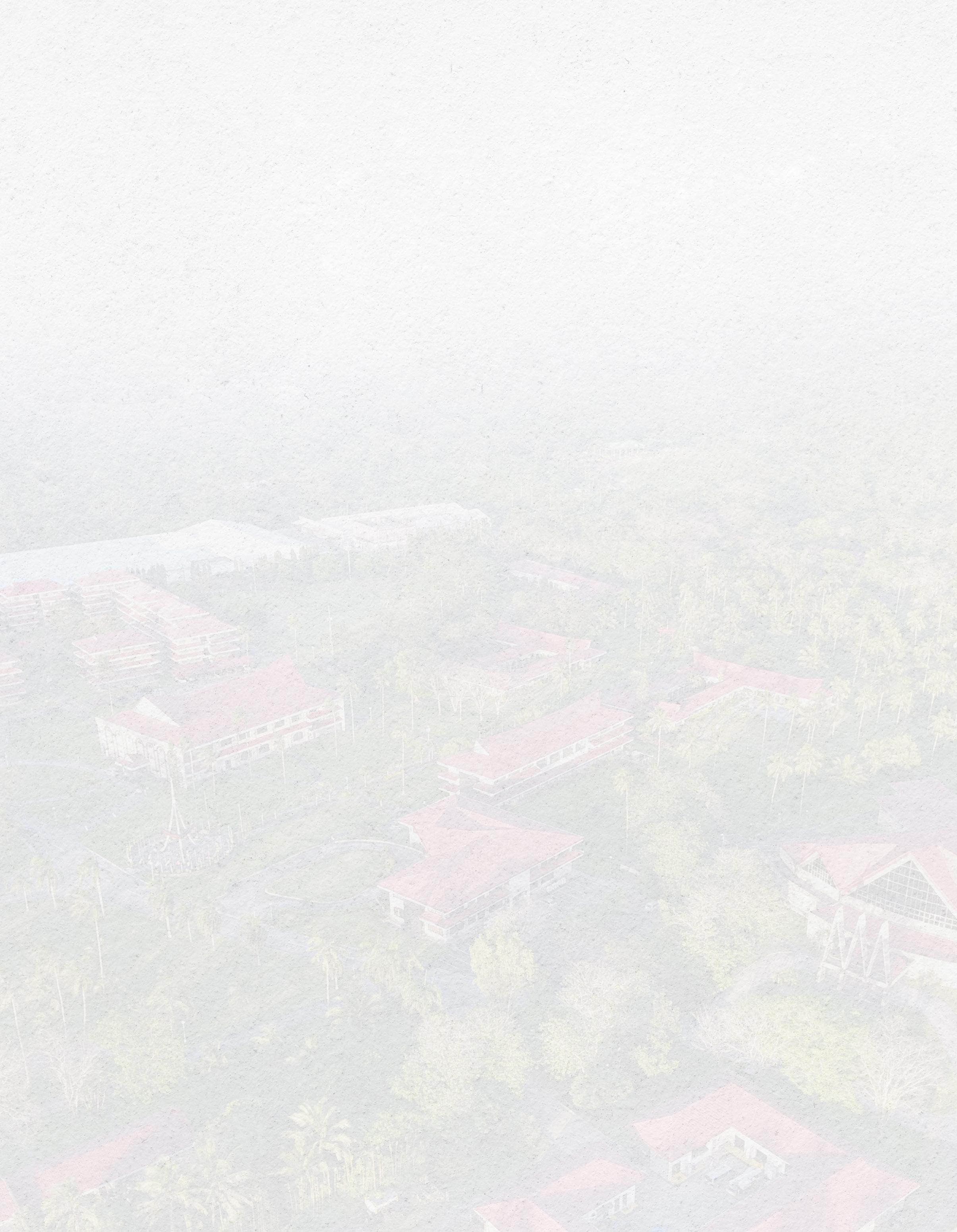
Shawna Vyhmeister, PhD, is the author of AIIAS: The First 50 Years. She is the academic consultant to the office of the vice president for academic administration and a faculty member in the AIIAS Graduate School Education Department.
2Karen Lizzeth Flores, “Alumni Updates,” Flags 14, no. 2 (October 2019): 11.
Remembrancesof theSeventh-dayAdventist TheologicalSeminaryFarEast (BaesaCampus)
ByJohnR.Jones

My childhood on the campus of Philippine Union College, where my parents were teaching, overlapped with Hilgerts’ years there. When I was 9 or 10 I happened to overhear Earle Hilgert lecturing in one of his history classes as I was walking down the hall of the main administration building (Jackson Sevrens Hall) one afternoon.
He was such an engaging lecturer—I was intrigued. So I tiptoed over near the open classroom door to listen in on the rest of his lecture. Starting the next afternoon I adopted the habit of going to that building each day as soon as my school let out at 3:30. I would sit on the terrazzo floor out in the corridor hugging my knees with my back to the wall, close enough to the open door that I could listen to his lectures. I don’t know why, but I somehow thought I had to do this surreptitiously—I wasn’t a registered college student, after all. I was shy, and felt intrusive. So I was always careful, as he was winding up his lecture, to slip quietly away.
Inevitably, one day as he was pacing back and forth lecturing, his trajectory took him to an angle that just allowed him to spot me. He excused himself from the students for a moment, stepped out into the hall, knelt down
beside me, and urgently asked if he could help. (Without phones in those early days after World War II, parents sent their kids with messages when they needed to contact someone on campus.) I felt the blood drain from my face, as I stammered “Well, . . . no; I . . . I . . . was just listening in!” I was on the tip of apologizing and saying that I wouldn’t do that any more, when he broke into his big smile, pulled me up to my feet and said “By all means! Most welcome! But you don’t have to sit on the floor outside here, you know; come on in!” And he went a couple of rows back into the room, quickly grabbed one of the empty deskchairs, and parked it at the end of the front row. “There! That’s your place in any classroom of mine! Always reserved for you!”
The remaining two years that he was at PUC, every afternoon that he was in class until 5:00, that’s where I was as quickly as I could get there after my school day—no matter what the subject. Years later, at the Seminary at Andrews, he remarked to me after class one day that it seemed like old times, with me sitting at the end of the front row. I replied that I felt the same way, but then added that there was a difference—that in the interim
he seemed to have learned a lot more! With his wholehearted laugh, he delightedly concurred.
During our last phone conversation, this past Thanksgiving weekend, he brought up that long-ago memory again, in his gracious way, by way of celebrating the shared pilgrimage. Anyone who knew him will instantly recognize how typical of him was that moment so many years ago, and that more recent moment of reminiscence in what turned out to be our final visit.
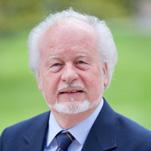
John Jones, PhD, was raised on the PUC campus and later returned as a seminary professor (1979-1987). He developed the institutional seal and logo, and expanded the basic academic handbook for the institution. He is a professor at the Philosophical Studies Department of La Sierra University in Riverside, California.
of The
TellsPatriarch His StoryAIIAS
Iwas first, of course, a student at Philippine Union College. I studied there from 1950 to 1955. I then worked as a ministerial intern, then as an evangelist, and later as a teacher.
During the summer of 1956, and again in 1962, PUC offered graduate courses in what they called the “Extension Division.” There were professors such as Siegfried Horn, Arthur White (the grandson of Ellen White), and Reuben Manalaysay, the president of PUC. I took courses from these good teachers until I had the equivalent of a Master of Divinity degree. But PUC was not yet authorized to grant master’s degrees in theology.
In those days, Dr. Elton Wallace was head of the Bible Department. Once, he asked me to speak during the worship service. I gladly did so, not knowing that he was checking to see if I would qualify as a teacher at PUC. He said that I passed all his criteria, except for one English word I mispronounced. In 1964, PUC invited me to join the theology department.
Since I was teaching, PUC needed me to have a recognized master’s degree, so they asked me to upgrade. I was sent to Loma Linda University in 1974. As I studied, I kept finding courses that were similar to ones I had taught. The university allowed me to sit for challenge examinations in these. Within a few
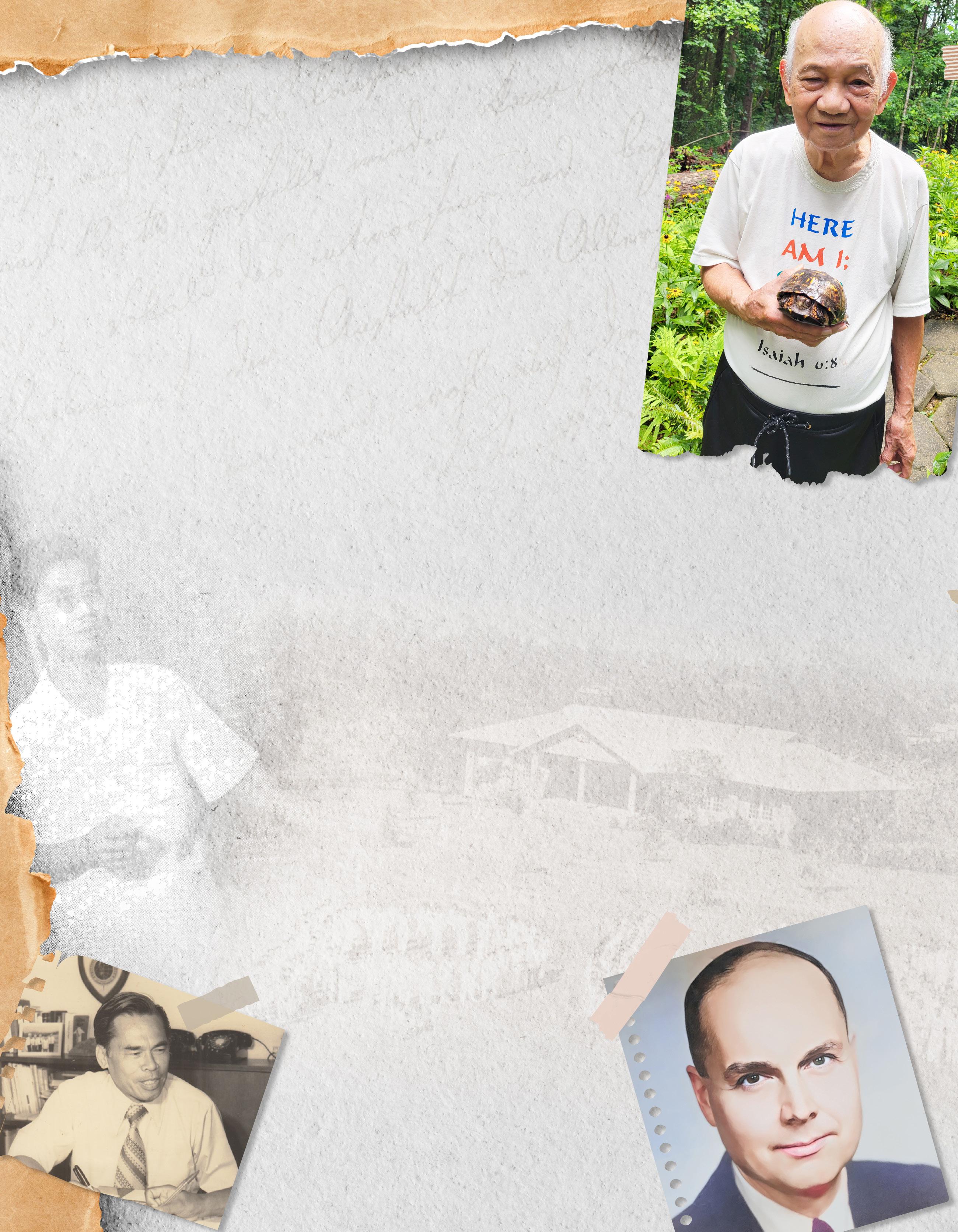
By Gil G. Fernandez
months, I received my Master of Science in Public Health degree from Loma Linda University.
I informed Dr. Alfonso Roda, who was president of PUC, that I had graduated, and prepared to return home. But PUC had other plans: they sent me to get a doctorate. I did a PhD in Historical Theology at Drew University in Madison, New Jersey.
By 1978, I had completed my PhD. My professors urged me to stay for graduation, but there were courses urgently waiting for me to teach them at PUC. I returned to the Philippines to teach, and Drew mailed me my diploma.
In those days, PUC was in Baesa. They were making plans to move to a new campus because the old one was no longer adequate. Manila was growing and encroaching on the land around the school. They were looking for a rural campus, and they finally found a property in Silang. The seminary and the graduate school moved first, starting classes in January of 1978.
It’s hard to say exactly when the seminary began. It was a gradual, almost imperceptible development. The Division thought to develop the PUC Bible department into a graduate school because it would be cheaper than to have teachers go all the way to the United States to get their degrees. But it was not good for two administrations to be together on the same campus. There was conflict.
When Dr. Leslie Hardinge arrived to lead the seminary, some problems began to arise. Dr. Hardinge was a foreigner and a builder. He actually let me do much of the administrative work and he did the building. He was very generous. The Division did not
directly fund PUC buildings, but Dr. Hardinge used the appropriation to build a Seminary building, and then shared it with the PUC graduate school.
Later, Drs. Werner and Nancy Vyhmeister came. Vyhmeister was a dynamic leader. He would tell us his plans to expand the Seminary, and we were only too happy to listen. He told us there were many workers who wanted to be upgraded but could not afford to come to the Philippines. So we went to them. We went all over: India, Sri Lanka, Indonesia, and Korea. We sent the syllabus ahead, then did the whole semester’s work in two weeks. After two weeks we would move on to another place. We brought the seminary to our pastors and fellow workers.
One of my fondest memories is of the book that we wrote on the history of the Adventist work in the Far Eastern Division. Light Dawns Over Asia, we called it. AIIAS students helped do the
Alfonso Roda
Leslie Hardinge
research, and I edited the volume, going to the countries to verify the facts.
In the mid-1980s, the Philippines was in turmoil. The NPA (communist insurgents) were active, and the president put the country under martial law. Among other things, it was decided that foreigners could only buy a limited amount of land. Therefore, when the land for AIIAS was purchased, they put it under my name. It was a big joke that if I left the church, we would lose AIIAS. I didn’t like that. I tried to get out of it, but there was no other way.
Finally, President Marcos issued a special decree that AIIAS could exist as an international institution. I was very happy to have it removed from being my responsibility. AIIAS progressed by leaps and bounds under the leadership of Dr. Werner Vyhmeister. And it continues to progress until today.
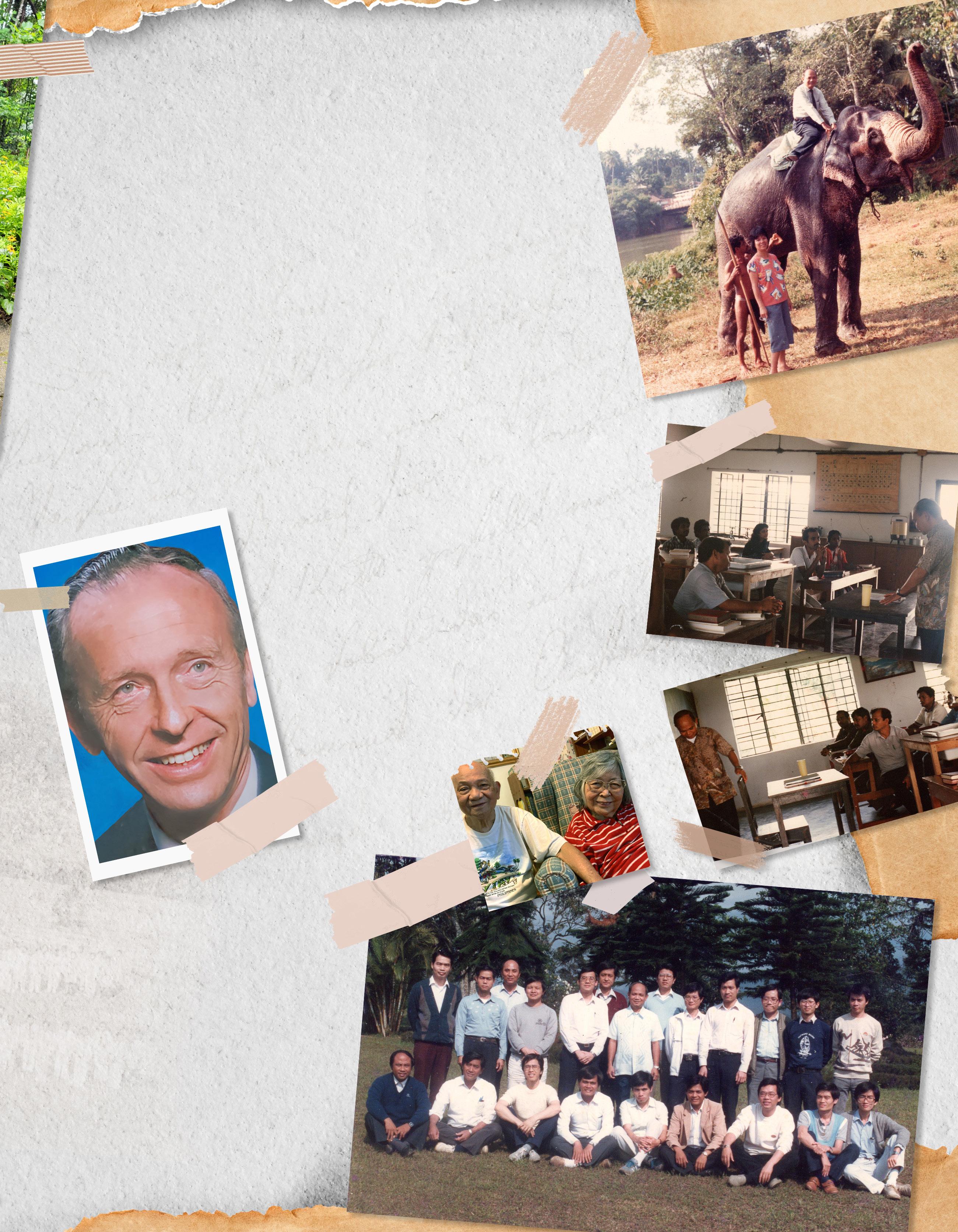
I remember once, when we were asking for accreditation, the chairman said that too many AIIAS faculty had doctoral degrees from Adventist schools. They recommended that some should study at non-Adventist schools to avoid inbreeding. When they saw that my degree was from Drew University, he said, “Dr. Fernandez has a good preparation,” and they accredited us. The accrediting body saw that AIIAS had a good program, and because of AIIAS’ good reputation, we were allowed to accredit other institutions. Other schools really began to respect AIIAS at this time.
Later, when AIIAS needed a new leader, they offered me the presidency. But I said that it would not be good for a Filipino to be president just then. So Dr. John Pesulima, an Indonesian, was recommended to be the next leader. He was president of UNKLAB, so he was a very experienced educational administrator. He ran the school very well. He would call some of us from time to time, to see if what he was doing was in line with the history and the culture, and we said, “Yes.”
Finally, after 40 years plus 10 of volunteer service, it was time to retire. My wife, Hipolita, was born in Hawaii, so we decided to move to the US.
Post Script: I am so happy that, after all these years, Dr. Shawna Vyhmeister, Werner Vyhmeister’s daughter-in-law, has finally written down the history of AIIAS. I read the whole book—even the footnotes! I had to use a magnifying glass to see it, because at age 90, my eyes are not so good anymore. What a blessing to have this book! I especially appreciated the chapter on miracles at AIIAS. God has been so good to this institution!
May I urge you to read Dr. Shawna Vyhmeister’s AIIAS the First 50 Years! If you don’t, you’ll lose 50 years (or even 100 years) of your life, assuming you’ll live that long!
Editor’s note: Mrs. Hipolita Fernandez passed away on August 12, 2023. She was 92. Hipolita and Gil had been married for 67 years.
Werner Vyhmeister
Remembrances of AIIAS
By Reuel Almocera
As a Student
I first came to AIIAS as a Master of Arts in Religion student in 1984. At that time, the Far Eastern Division (FED) was upgrading nearly all ministers through the advanced internship ministerial program. I remember my pioneering professors who came to the Philippines in 1979: Dr. John Jones; Dr. Roy Adams, who later became associate editor of Adventist Review; and Dr. Ralph Larson. Dr. Jones was involved with ATESEA, and he traveled a lot, so he asked me to teach Greek in his place when he was away. When nine of my colleagues and I came back to attend graduation at Finster Chapel in 1985, the head of the Theology department told me I would have a doctorate one day.
At Puting Kahoy
I was enjoying serving as pastor of the Cagayan de Oro Central Church in 1985-86 when I was called to an interview with FED president Dr. Ottis Edwards and Elder Colburn. They were seeking to build the faculty of AIIAS, and they invited me to serve as the Ellen G. White Research Center director, a position left open by Dr. E. A. de Leon, who had become president of Philippine Union College (PUC). They assured me that by accepting this position, I would be sent for doctoral studies, which was really what attracted me. My wife had a fledgling medical practice in CDO, but we decided that ministry was the priority. I was 29 when we accepted the call and came to the PUC Silang Campus in 1987.
I worked half-time as the pastor of Finster Chapel of All Nations. I had a hard time recruiting deacons because the students were Union presidents and high-ranking church officers, and they
resisted taking a servant’s position. Then, Dr. Werner Vyhmeister, the AIIAS president, volunteered to be the head deacon. His attitude toward service was a humbling experience for all.
As a young pastor, there were so many things I had to learn and adjust to, including cultural differences. Once Dr. Nancy Vyhmeister told me that I did not deserve to be the pastor of the Finster church. I was not used to being criticized like this. I really wanted to drop everything and return home. But I also recalled what I had learned in conflict management class. So, I answered, “Ma’am, thank you very much for your comments and concerns. I am learning so much without
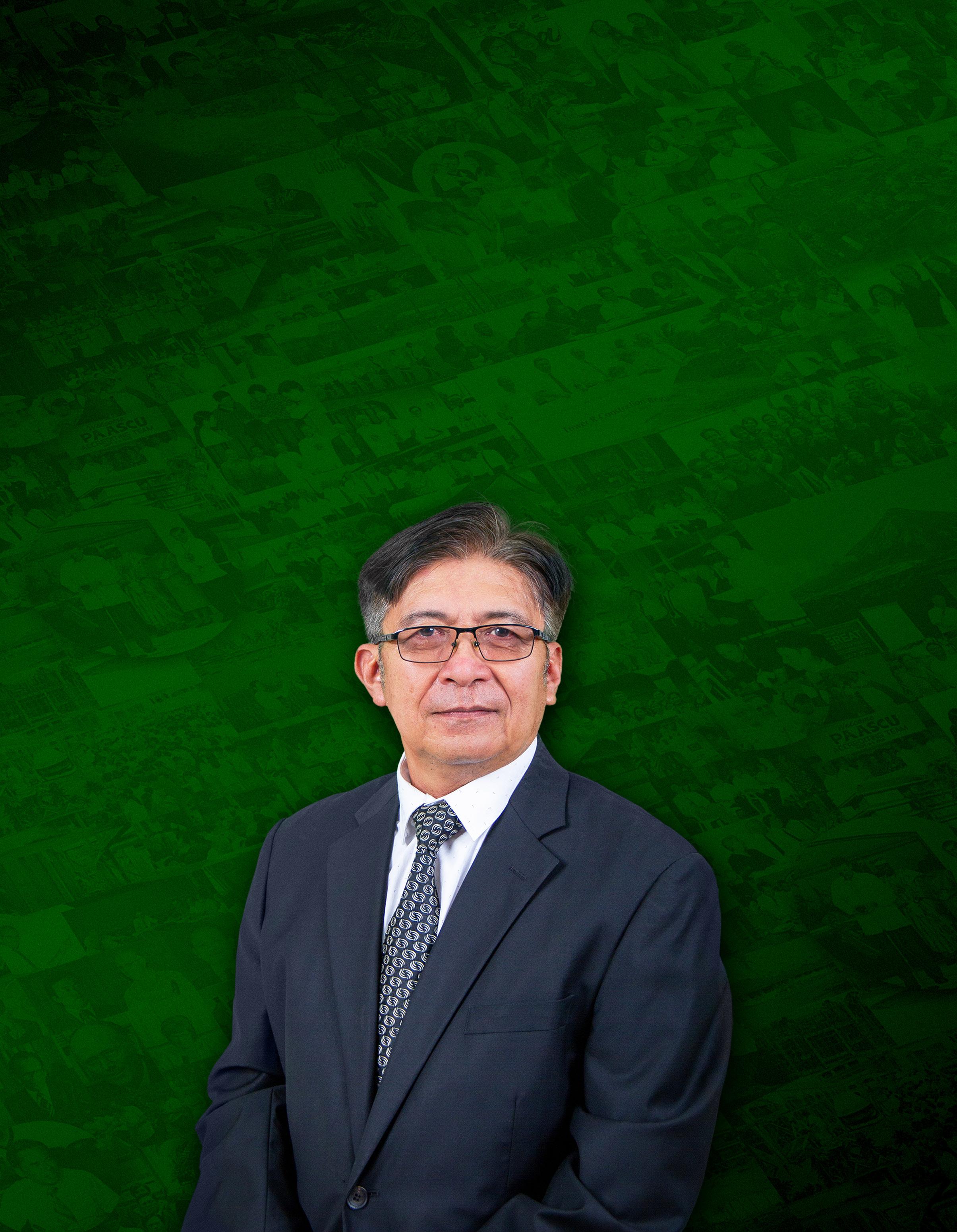
paying tuition.” She eventually became my good friend and was my adviser in my doctoral education.
On the AIIAS Campus
Later, the administration asked me to teach as an instructor in the Applied Theology department. I grew through the ranks, eventually becoming a full professor. When the church was transferred to the present AIIAS campus in 1991, I was tasked to pastor it. But since I was already teaching a heavy load, a year later we endorsed the church to the care of the conference. What I learned here at AIIAS is that you can dream big dreams. In 1987, Dr. Werner Vyhmeister envisioned that the institution would have faculty with doctoral degrees in all the departments in five years. He dreamed that AIIAS would offer doctoral programs by 1992. It came to fruition, but he wasn’t at AIIAS anymore. People felt sorry that Dr. Vyhmeister was not able to see the dream fulfilled, yet I know he saw it in his vision before he left for Andrews University.
Looking Back
Advising was the most exciting part. When your advisee becomes your friend, it’s almost like how a mango tree produces another mango tree. It’s not just the fruits— it’s almost like duplicating yourself. It’s part of building a legacy in the lives of others. I like to be introduced as a builder of people. That’s the purpose of AIIAS: to develop leaders.
I have enjoyed my years at AIIAS, especially seeing my former students again. Whenever I meet them, they express their thanks and tell me how they are serving in the ministry. It makes me feel good. One even reminded
me of how he was once ready to leave AIIAS, but I encouraged him to stay. My students are successful; many are notable leaders in their fields. That is one of the most significant rewards of my time at AIIAS.
When Dr. Hudson Kibuuka, associate education director at the Seventh-day Adventist world headquarters, and I met for the first time here, he said, “Oh, so you’re Almocera! Your name has come up in so many meetings, but people would say, ‘No, don’t take him from AIIAS because he is so important there. He’s a pillar there.’” I realized that though we didn’t have a chance to serve as missionaries elsewhere, God gave me the privilege of providing continuity and supporting the training of new leaders as they came to AIIAS until they were established and able to serve on their own.


Remembrances of AIIAS’ Early Years
By Pioneering AIIAS Personnel
Graduations are one of the most anticipated events of AIIAS. The ceremonies are always grand and colorful.
When I started my work in the SDA Theological Seminary-Far East as Records and Admissions office secretary (1983-1991), there were three graduations (only a one-day event) per year. The programs, held in Finster Chapel, were well attended by the faculty and staff. The excitement and jubilation of the students, their families, and friends could be seen and felt as the candidates lined up at the chapel entrance. The flags representing the country of each Seminary student streamed in, carried by their respective flag bearers. The candidates followed, marching in step to the chords of the triumphal march. Then the whole congregation sang “A Mighty Fortress Is Our God,” as the faculty and program participants walked to their places. The entire program was solemn and very meaningful.
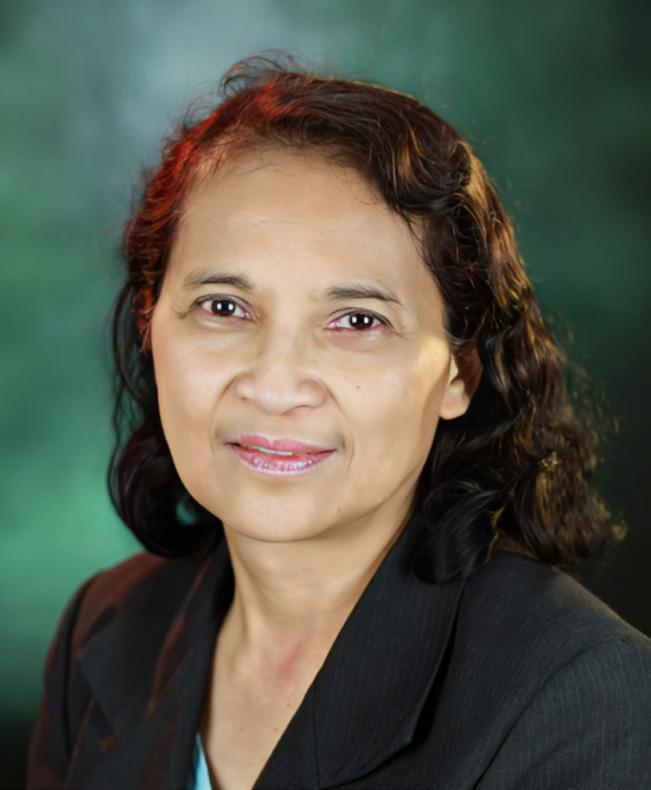
Elsie Dela Cruz served AIIAS as an office secretary in the Records and Admissions Office (1983-1991), the Ellen G White Research Center (1991-2004), half-time editor of the Graduate School (2000-2004), and as institutional editor (2004-2014). Her family lived on both the PUC campus and the present AIIAS campus. She retired in 2014.
In April 1978, I started my pioneering work at Philippine Union College (PUC), Puting Kahoy, as a fresh Bachelor of Secretarial Science (BSS) graduate. The new PUC campus was still under construction. To give you an idea of how the campus looked, there were only a few houses for faculty, and some modular buildings housed staff, a store, and an office. There were only two apartments, A & B, for students. Back then, classrooms and the library were all in one long building with dividers. During weekends, the building turned into a church.
I enjoyed my pioneering work at PUC. I stayed in a two-bedroom modular house near the creek with my roommate, Bernice Paras. The creek was a shortcut coming home from the market or spending weekends with my family. It was scary and unsafe, but we still passed that way. The campus was so muddy on rainy days that we would go to work wearing boots.
Pioneering was a unique experience. I worked in the library as a clerk with my roommate. We typed book cards on a manual typewriter. To process the books, I used to paint white labels on the book spines with a paintbrush. We left the books standing overnight to dry. Then I would print the call number on the spine the next day with pen and ink, then let it dry again. Finally, the books were completely processed and ready for display.
Faculty, staff, and students were all in harmony. There were even times that we had to help students type their papers during crunch times. It was a difficult time back then, full of fond memories and many God-delivered blessings. As Jeremiah 29:11 says, “For I know the plans I have for you, declares the Lord, plans to prosper you and not to harm you, plans to give you hope and a future.” God has fulfilled this promise at AIIAS.
Reuel Almocera, DPS, is the longestserving faculty member in the AIIAS Seminary, joining in 1987. He served in the Applied Theology department and as the Ellen G. White Estate branch office director. He is from the Philippines.
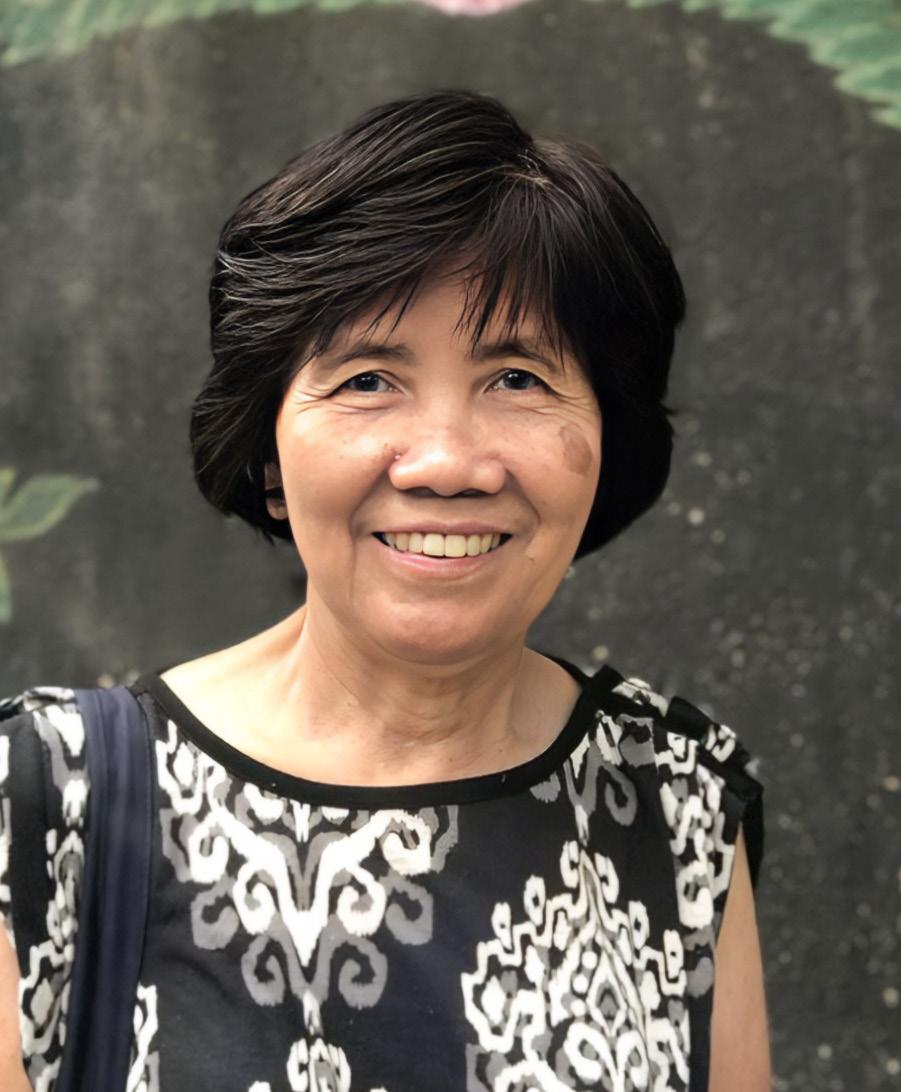
Elizabeth Siapco served at the Leslie Hardinge Library as a pioneering clerk. She served as a typist (19781985), library secretary (1986-1989), library assistant (1990-2005), and bibliographic services supervisor (2006-2015). She retired in 2015.

I was one of the last graduates of the Philippine Union College (PUC) at the Baesa campus in 1981. My wife Annie and I were second to the last to be married in the Jackson Sevrens Chapel, the last building that got demolished during the transfer to the new campus in Puting Kahoy. My heart melted as I watched all the buildings get demolished because I had served as a full-time working student for six long years.
My brother Marcos and I stayed in one of the rooms in the girls’ dormitory. It was the only place we could live for the next several months while guarding and caring for the essential items left behind that were about to be transported to Silang, Cavite, where the new PUC was moving. My family and I were the last to move from the old PUC campus in Baesa to Puting Kahoy, Silang, Cavite, where the Adventist University of the Philippines is now. Coincidentally, my family was also the last to move out from the Puting Kahoy campus to Lalaan I, where AIIAS is now located. It was in 1991 when AIIAS moved out from the PUC campus, and from that year to 1998, my family still stayed at PUC. We cared for all the AIIAS students residing in the five apartments owned by AIIAS. Students were transported to AIIAS every day. During those seven years, my family
faced many challenges but the Lord did not fail us. When the last of the AIIAS apartments were given to PUC, my family did not know where to go. Before we left PUC, AIIAS promised to provide us with housing on the AIIAS campus. However, with all the leadership changes, that promise got delayed for many years. We questioned God why this happened after all the difficult times and challenges we had gone through.
Eventually, negotiations happened between the AIIAS administration and our family. They offered to loan us money to construct a house on their purchased property. After many long years of waiting, we were finally given a loan.
Job 23:10 says, “But he knows the way that I take; when he has tried me, I shall come forth as gold.” Our family’s faith became stronger because of all these trials. Thanks to AIIAS for this opportunity to serve God all these years.
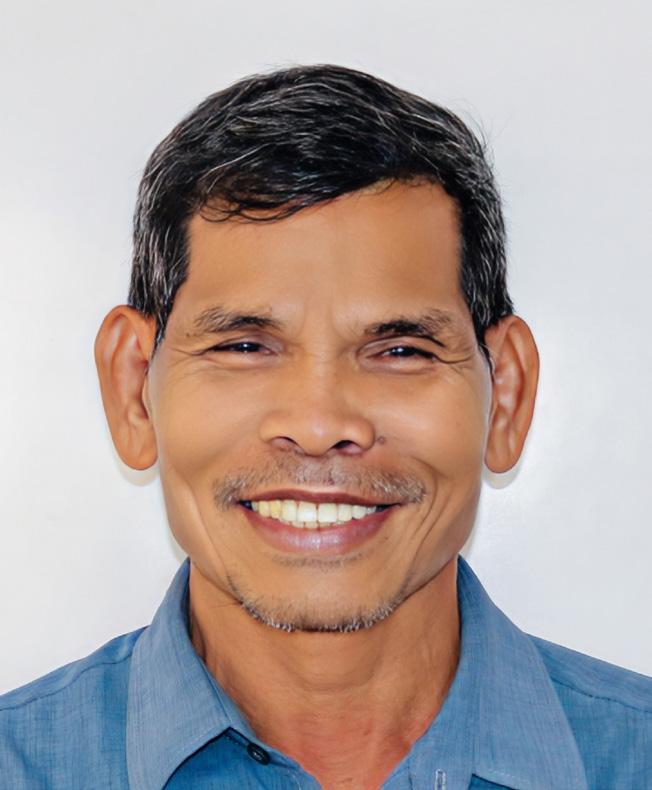
Jose “Joe” Magro served the Seventh-day Adventist Theological Seminary Far East and the Philippine Union College as a plumber and maintained the faculty housing and student apartments on the present AUP campus (1981-1986). He was staffin-charge of five apartment buildings (1987-1998) and was a plumber and electrician on the AIIAS campus (19992015). He retired in 2015. He is married to Annie Musico-Magro, and they have four grown children.
“I love how AIIAS student-staff relationships are very close-knit, especially when they were left to our care during the transition from the PUC (now AUP) campus to the current AIIAS campus in Lalaan I. I have so many things to thank AIIAS for. I will never forget the four-day retreat and recreation events in resorts and beaches. Some of the good memories my family enjoyed were the employee year-end parties, the food, and the gifts. I’m so proud to be an AIIAS retiree. Now, I can only wish to turn back the years.”
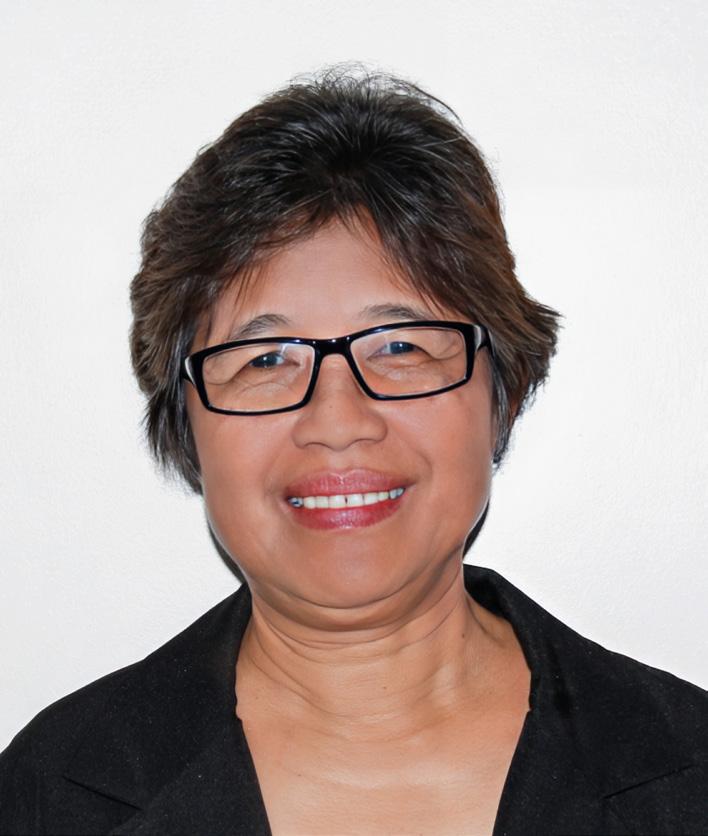
Annie Musico-Magro served the Seventh-day Adventist Theological Seminary Far East as library staff (1988-1993), as a teacher at the AIIAS Junior Academy (1993-2017), and as a teacher and librarian at the AIIAS Academy (2015-2019). She retired in 2019.
Working for the Lord at AIIAS Elementary School when it was still named Makiling View Adventist School (in the 80s) was indeed memorable. It was a blessing: challenging, but rewarding. As I look back on those years, there are a lot of colorful memories I could recount, but one story stands out. It took place in the late 90s when I transitioned from being an ESL teacher to being a firstgrade teacher.
I was challenged by the principal to teach the first graders, notwithstanding the fact that few, if any first-grade teachers are male. I had zero experience teaching kids of this age, and I never imagined what challenges I would face.

After a honeymoon period of about a month, the struggle ensued almost daily. The cause was not the daily lesson plan, the strategies, nor the methodology since I had prepared for them. The challenge was that ADHD was present in three of my students; two of whom were accompanied daily by their nannies. At the end of each day, for many months, I would go home exhausted, despondent, and quite affected. I felt I was a failure.
It was then that God reminded me that dependence and reliance on Him was the only answer to such a test. He painstakingly honed my patience and gave me a mindset that I had not acquired in school. He afforded me wisdom when episodes of such problems set in.
I survived strong that 1987-1988 school year, a witness to the miracles God had wrought in these three pupils, their classmates, and me. The Master Teacher proved to me that the message of the song is true:
There is no problem too big; God cannot solve it. There is no mountain too tall; He cannot move it. There is no storm too dark; God cannot calm it. There is no sorrow too deep; He cannot soothe it.
Indeed, as Philippians 4:13 says, “I can do all things through Christ who strengthens me.”
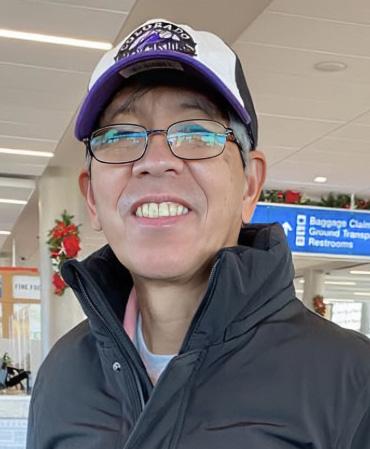
Ishmael J. Siapco served as a teacher for Grades 1, 7, and 8 at the Makiling View Adventist School (1985-1990) and the AIIAS Elementary School (1991-2000). He later became an instructor at the English Center (2004-2009). He retired in 2009.
Back in the days when AIIAS shared the campus of PUC (now AUP), some of the students earned part of their tuition by working for the professors. Jun Barrientos was one of those working students, and he carefully cared for the yard and garden around our house just up the hill from the PUC campus.
One day as I walked into my home office, I was greatly disturbed to see a large snake curled up on the window sill just inches behind my desk. I raced outside, where Jun was caring for the plants.
“Jun!” I shrieked. “There’s a snake on my window! Get it down!”
Jun spotted the offending snake, and seemed almost as terrified as I was.
“How should I do it?” his voice trembled.
“I don’t care, just get rid of it!” I begged, backing up so the snake was no longer visible.
About 10 minutes later, Jun called me to come see the snake. I ran outside.
“A good-sized snake,” he observed.
“Yes!” I agreed, as we stared at the now quiet serpent, about six feet long.
When I attended the AIIAS celebration in April of 2023, Jun was there, now with wife and children. I reminded him about the snake.
“Yes, I remember,” he smiled. “I was so afraid! But we got rid of the beast!”
“What a memory of the olden days!” I replied. “God was with us!”
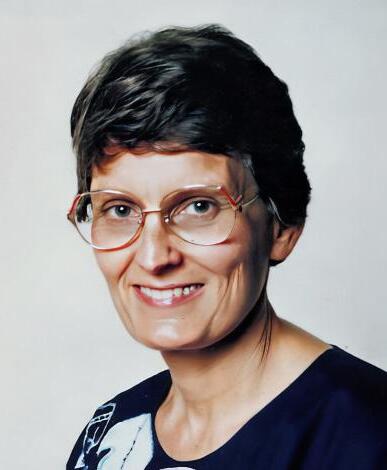
Nancy Vyhmeister, EdD, was a professor and librarian during the early years at AIIAS. She authored the first AIIAS research manual before the institution moved to the new campus. Her early written histories provided a foundation for the book AIIAS: The First 50 Years. She and her husband, Werner Vyhmeister, worked in the Philippines from 1984 to 1991, where he was president of AIIAS.
AIIAS at 50: Gratitude
By Diói Cruz
It is easy to be grateful when life is going well. My heart naturally fills with gratitude when I see my children happy, when I feel loved by my wife and family, when a prayer is answered, or when I have enough money to buy a new appliance instead of paying to fix an old one. However, when I see a loved one suffering, and I hope for a speedy response from God, and He takes His time, or when the money runs out, gratitude doesn’t flow as easily.
Today, we can be thankful for the AIIAS jubilee celebration. Over the past 50 years, AIIAS’ spiritual journey can only fill our hearts with gratitude for its commitment to spiritual values and its impact on leaders worldwide. At all levels of service, AIIAS graduates are making a huge difference in the lives of many people. However, when a financial crisis forces the institution to “trim the slices of the cake,” finding gratitude for every aspect becomes a difficult task.
Nevertheless, the Scripture is clear about the power of gratitude. God calls us to be thankful in all circumstances (1 Thess. 5:18). Numerous influential women and men in the Bible adhered to the principle of thankfulness.
For example, Daniel, despite the risk of being thrown into the lions’ den, continued his daily practice of praying and giving thanks to God three times a day (Dan. 6:10). This loyal gratitude, even in peril, reflected his solid faith in God’s provision as he emerged unharmed from the lions’ den.
Jonah didn’t listen to God, ran away, and ended up in a storm. He asked to be thrown into the sea and got swallowed by a big fish. Inside, he apologized and thanked God (Jonah
2:9). The fish spit him out, and Jonah finally did what God wanted and warned Nineveh.
Hannah was childless and prayed for a son. God answered, and she kept her promise, dedicating Samuel to lifelong service as a priest. Gratefully, she worshiped God, valuing the Giver over the gift (1 Sam. 2:1-2).
Paul, during a dangerous storm, gave thanks to God, broke bread, and shared it with others. Despite the ongoing storm, all 276 people aboard safely reached shore the next day. Paul’s example encourages us to give thanks in times of trouble (Acts 27).
“Gratitude,” from the Latin word “gratia,” denotes grace, graciousness, or thankfulness. Harvard Medical School defines gratitude as the acknowledgment and appreciation for both tangible and intangible gifts, fostering a connection to sources beyond oneself, such as others, nature, or a higher power (Miller, 2012). Renowned expert Robert Emmons emphasizes that gratitude is a multifaceted concept, encompassing emotion, virtue, moral sentiment, motive, a coping mechanism, skill, and attitude. It emerges when individuals recognize receiving something valuable, irrespective of it being earned or deserved (Cockayne & Salter, 2023).
Practicing gratitude at work and at home benefits those around you and serves as a gateway to improving personal mental health. Here are 8 incredible statistics to illustrate this:
• Keeping a gratitude journal regularly has proven to boost optimism by 5-15% and enhance sleep quality by 25% (Ackerman, 2017).

• The absence of gratitude plays a major role in causing job dissatisfaction, turnover, absenteeism, and burnout (Vozza, 2016).
• 70% of employees would experience an improved sense of well-being if their boss expressed more gratitude, with 81% being more motivated to put in extra effort (Glassdoor, 2013).
• A staggering 94% of female and 96% of male employees concur that a boss who shows gratitude is more likely to achieve success (Kaplan, 2012).
• If employees felt more appreciated by their boss, 53% of them would choose to stay with the company for a longer period (Glassdoor, 2013).
• Employees who receive greater expressions of gratitude in the workplace tend to report lower levels of depressive symptoms and reduced stress (Ackerman, 2017).
• A study suggests a genetic link to gratitude, specifically through a variation in the CD38 gene associated with oxytocin secretion, impacting expressions of gratitude towards a romantic partner in various settings (Algoe & Way, 2013).
• Practicing gratitude lessens toxic aggression, frustration, and regret, even in the face of negative feedback (Morin, 2015).
Some people confuse indebtedness with gratitude. When you owe, you feel you must pay back, but when you’re thankful, you want to improve
your relationship and show appreciation. In a study about kids moving to a new place,

being thankful helps connect, while owing can destroy family bonds. If you expect too much from someone helping you, you’re less thankful and feel more like you owe. Thankfulness is like a chain reaction—it makes you notice others’ help and want to help back, making relationships stronger (Ting, 2017).
However, the same degree of appreciation or connection may not be evident when you sense that you owe or deserve a certain level of service. Recognizing that AIIAS has provided us with more than we expected as students, alumni, or employees, and realizing that everyone working or studying on campus is more than just an asset fosters a deeper sense of appreciation and connection.
The ancient Israelite Jubilee was not just a period of restoration and liberation; it was a celebration intertwining God’s compassion and justice with the virtue of gratitude. Returning land, freeing slaves, and forgiving societal debts during the Jubilee were core expressions of gratitude to God for His ultimate ownership and provision. Similar to how the Jubilee encouraged Israel to embrace compassion and break the chains of oppression, our practice of gratitude today can contribute to a society marked by renewal, restoration, and the abundant blessings of justice and mercy. Embracing the essence of the biblical jubilee issues a timeless call to live lives marked by gratitude, echoing divine principles of compassion and justice in our modern context.
White (1905) reminds us that “nothing tends more to promote health of body and of soul than does a spirit of gratitude and praise. It is a positive duty to resist melancholy, discontented thoughts and feelings— as much a duty as it is to pray” (p. 251). Let us teach our hearts and mouths to praise God for His amazing love. And let’s guide our inner selves to be hopeful and stay in the light that comes from the cross of Calvary.
Works Cited
Ackerman, C. E. (2017, April 12). Benefits of gratitude: 28+ surprising research findings Positive Psychology Blog https://positivepsychology.com/benefits -gratitude-research-questions
Algoe, S. B., & Way, B. M. (2013). Evidence for a role of the oxytocin system, indexed by genetic variation in CD38, in the social bonding effects of expressed gratitude. Social Cognitive and Affective Neuroscience, 9(12), 1855–1861. https://doi.org/10.1093/scan/nst182
Cockayne, J., & Salter, G. (2023). Group gratitude: A taxonomy. The Journal of Value Inquiry 1–22. https://doi.org/10.1007/s10790-022-09924-3
Gene, P. (2023, March 17). Benefits of gratitude: 31 powerful reasons to be more grateful https://www.happierhuman.com/benefits -of-gratitude
Glassdoor. (2012). Employers to retain half of their employees longer if bosses showed more appreciation; glassdoor survey. https://www. glassdoor.com/employers/blog/employers -to-retain-half-of-their-employees-longer-if -bosses-showed-more-appreciation -glassdoor-survey/
Kaplan, J. (2012, June-October). Gratitude survey conducted for the John Templeton Foundation. https://greatergood.berkeley.edu/images/ uploads/JTF_GRATITUDE_REPORTpub.doc
Miller, M. C. (2012). In praise of gratitude. Harvard Health. https://www.health.harvard.edu/blog/in-praise -of-Gratitude-201211215561
Morin, M. (2015, April 3). 7 scientifically proven benefits of gratitude. Psychology Today. https://www.psychologytoday.com/us/blog/ what-mentally-strong-people-dont-do /201504/7-scientifically-proven-benefits -of-gratitude
Ting, S. C. (2017). The difference between gratitude and indebtedness. American International Journal of Contemporary Research, 7(4). http://www.aijcrnet.com/journals/Vol_7_No_4 _December_2017/7.pdf
Vozza, S. (2016, November 24). The science of gratitude and why it’s important in your workplace. Fast Company. https://www. fastcompany.com/3065948/the-science-of -gratitude-and-why-its-important-in -your-workplace
White, E. G. (1905). The ministry of healing. Pacific Press.
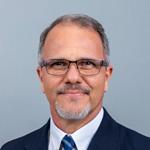
Diói Cruz, DMin, is a former faculty member in the AIIAS Seminary. He comes from Brazil.
Take Root, Bear Fruit
By Istiarti Sarempaa
AIIAS exists to help fulfill the great commission to go forth, preach the gospel, and teach people about God’s kingdom (Matt. 28:19-20). To uphold this mission, the 2022-2023 AIIAS Student Association collaborated with the Samar Mission of Seventh-day Adventists to organize a mission trip to Northern Samar, Philippines, from May 13-21, 2023. A total of 36 missionaries from AIIAS participated, divided into three groups of 12 individuals, each serving in a distinct field: Victoria, Catarman, and Capul.
Samar, the third largest island in the Philippines, still has a relatively small Adventist presence. Despite a population of approximately two million people, the Adventist membership on Samar stands at around 7,000 individuals, with only 161 churches across the island. The Samar Mission, part of the Central Philippine Union Conference, presents a significant need for missionary work.
The core objectives of this mission trip were:
1. To share the Gospel

2. To provide emotional and spiritual support
3. To organize community outreach events and evangelistic gatherings, and
4. To offer humanitarian aid, medical assistance, and health education.
During our mission trip, we organized evangelistic gatherings, with the central theme being “Take Root, Bear Fruit.” These gatherings aimed to underscore the significance of anchoring ourselves in Christ and bearing the fruits of the Holy Spirit. Before the main worship sessions, we conducted a special program for children, including singing, storytelling, and crafts, designed to impart moral values and instill a sense of purpose and hope in the younger generation. We also shared health messages, focusing on the NEWSTART themes.
We actively participated in early morning house-to-house visits, serenades, and prayers with the community. We assisted with local infrastructure improvements, such as church buildings, community centers, public gardens, and other essential facilities, to create a conducive environment for learning and community gatherings. We also taught characterbuilding and art to students in an elementary school. We set up medical aid stations, where free check-ups, consultations, and essential medications were provided. Volunteer doctors and nurses conducted health screenings, treated minor ailments, and performed circumcisions.
Our mission trip to Samar allowed us to positively touch many lives. The evangelistic meetings attracted over 500 attendees, while the health check-ups benefited at least 600 people across the three locations. Approximately 100 bags of groceries and rice were given to underprivileged families and people with disabilities. The missionaries witnessed the baptism of 66 souls.
For the missionaries and church members in Victoria, Catarman, and Capul, this mission experience was life-changing. It was marked by a series of miracles. One remarkable incident occurred just before the start of the evangelistic program when heavy rain began to fall, causing the tent where the program was being held to leak profusely. Panic ensued as the water threatened to damage the sound system and electrical outlets. We came together in prayer as a group. Miraculously, when we said “Amen,” the rain ceased. Moreover, despite multiple power outages in the village, God worked miracles to restore
power after each prayer. It was evident that God was listening to our prayers. This mission trip was His work, and He made it a resounding success.
One of the elders from the Capul Church testified that this was the first evangelistic meeting they had held in over 60 years. She described it as the most challenging mission work they had undertaken, and expressed a desire for more such missions.
As the mission trip concluded, Pastor Antonio Gobi, the executive secretary of Samar Mission, expressed the immense joy and gratitude of the Samar Mission for this mission trip.
He expressed his hope that AIIAS would continue to send individuals for further mission work in Samar.
This mission trip reminded us of the importance of spreading faith through acts of kindness and service, promoting unity, understanding, and spiritual growth. As we returned, we carried with us the memories of hearts touched and lives uplifted, and we committed to continuing our evangelistic efforts to bring faith and hope to communities in need around the world.
TESTIMONIES
A few months ago, I received wonderful news from Pastor Antonio Gobi about an upcoming mission trip by a team from AIIAS to conduct an evangelistic effort in my district. Initially, I hesitated because I was still adjusting to my first district assignment. However, I didn’t want to miss the opportunity to work alongside a dedicated team from AIIAS in the service of the Lord. So, I promptly convened a meeting with the district elders, and after careful consideration, we decided to hold the evangelistic meeting in Capul. This choice was challenging due to the strong presence of Catholicism in the area. Nonetheless, we believed that God had a plan. With the active support of the Capul brethren, we were determined to share the
was a brief evangelistic effort, it was truly worthwhile, thanks to the dedication of the AIIAS team, who generously contributed their time, resources, and talents to serve the Lord.
Wilfred Naagas, District Pastor of Capul, Samar, Philippines
Our group experienced many firsts as we served in Victoria, a barangay in the municipality of Allen, Samar. We began our days serenading homes at 3:00 a.m., while the rest of the day was spent in outreach through community work, house visitations, medical check-ups, fellowshipping with the church family, and evening services. One thing is certain: the members of the Victoria Seventh-day Adventist Church had done the groundwork, and we were there to help complete the work they had already started! We all knew we were here to serve, and I tell you, serve, we did! Each new experience brought a greater appreciation of mission work and what it meant to be of service in whatever capacity.
VonErik Liligeto, PhD in Education student from Fiji

Good News of Salvation with the Capuleños.
As the meetings began . . . I witnessed the interest and engagement of the children, young people, and adults; I became convinced that many souls would find their way into God’s kingdom. This ministry provided an opportunity for people to truly understand the principles of the Seventh-day Adventist Church and gain a deeper comprehension of the Word of God. I cherish the memories of this experience, particularly the positive response of the people during our health check-ups, children’s programs, and gospel presentations. The Central Elementary School expressed gratitude for the character development program conducted by the AIIAS team. Although it
Although I had recently become a part of the AIIAS community, having arrived just three weeks earlier, I joined Team Catarman and took on a leadership role in the Children’s Ministry. I noticed the incredible enthusiasm and inquisitiveness of the children as they eagerly learned about Jesus. Each night, more than 150 children participated in the evangelism program. During the daytime, we actively engaged in church expansion efforts, visited and offered prayers for families, and made preparations for the evening program. Being a part of Team Catarman was a deeply meaningful experience for me, and it provided me with valuable new insights and experiences.
Zin Mar Kyaw, MA Education student from Myanmar
I was assigned to minister in the Catarman area with ten other members. Being a part
of the trip has helped me discover several things I had never done before. This was my first time joining a mission trip. Therefore, it was also my first time participating in hands-on ministries such as church renovation, member nurturing programs, children’s programs, and biblical preaching. I believe that it is only by God’s grace that this mission could come to fruition. As we are reminded of His leadership throughout the Samar trip, let us remember the newly baptized and the local churches for their unwavering support during this remarkable journey.
Jeremia Elleos Tarek, PhD in Education student from Indonesia
The AIIAS SA Mission trip to Samar made me realize that we can only plan, but it is God who knows what is best, and brings about the best results. From our early morning sessions of serenading church members and Bible students to the nightly sessions of health and gospel talks, the
in-between games with the youth, and the community service in Victoria, each day was fully packed. I suggested that the group forgo the early morning sessions for at least a day or two due to exhaustion and lack of sleep. But this activity was deemed too valuable to skip, even for a day. It paid off in the form of an increase in attendance at the nightly meetings and increased involvement of local church youth members.
Adlai Wilfred Tornalejo, PhD in Religion student from the Philippines

Istiarti Sarempaa (MA, ’21) is a PhD in Education student of the AIIAS Graduate School. She is from Indonesia.
AIIAS Launches its First History Book in Celebration of 50 Years of God’s Faithfulness
By Sharnie Love Zamora-Belarmino
AIIAS has published its first history book commemorating the events between the institution’s inception and the present. AIIAS: The First 50 Years is authored by former AIIAS faculty member Dr. Shawna Vyhmeister. The book was first released during the 50th Founding Anniversary Celebration of AIIAS, beginning with a book signing event at the Southern AsiaPacific Division (SSD) of Seventh-day Adventists Midyear Meetings on May 2, 2023.
The concept of creating a book on the 50-year history of AIIAS was born at a Loma Linda-area alumni meeting in 2021, during a friendly get-acquainted discussion between former AIIAS Professors Shawna and Ronald Vyhmeister and AIIAS President Ginger Ketting-Weller. The AIIAS Board and administration of the institution showed tremendous support for the project from the start.
President Ketting-Weller presented a copy of the AIIAS history book to Pastor Roger Caderma, president of the Southern Asia-Pacific Division (SSD) of Seventh-day Adventists. Pastor Audrey Andersson, general vice president of the Seventh-day Adventist Church and AIIAS board chair, accepted a copy to carry back to the General Conference for Pastor Ted Wilson, president of the Seventh-day Adventist Church.
“AIIAS was founded to bring worldclass Seventh-day Adventist graduate education to Asia”, explains AIIAS President Ginger Ketting-Weller. “AIIAS is busy developing the next generation of leaders who have that unique cultural worldview that comes from studying at AIIAS. We exist to serve the Seventh-day Adventist Church, and we’re grateful to pursue our mission hand-in-hand not only with our home regions in Asia, but as a service to the world church.”
When SSD President Caderma asked who among these church leaders were AIIAS alumni, many of the SSD Constituency Members raised their hands. “I would like to encourage everyone to get a copy for our institutions. We are here to support AIIAS. It is our institution, training leaders for our church, and we are thankful for that program.”
The history book tells the story of how AIIAS began as the Far Eastern Division Seminary in 1972, and how it continues to thrive up to the present time. It pays tribute to the service offered by pioneering leaders of AIIAS and recounts numerous stories of God’s faithfulness towards AIIAS from its humble beginnings. The history is divided into three significant periods: a tribute to the historical roots (1952-1971) and the early years of the seminary (1972-1985), a closer look at the AIIAS years (1985-present),
and a topical section that provides a deeper look into life at AIIAS and activities that support its mission. The book is based on documentary research from the institutional archives which provided data to establish the facts cited in the book. Multiple interviews from key leaders and pioneering professors who lived through experiences at AIIAS add color and detail, illustrating how God has blessed the institution throughout the years.
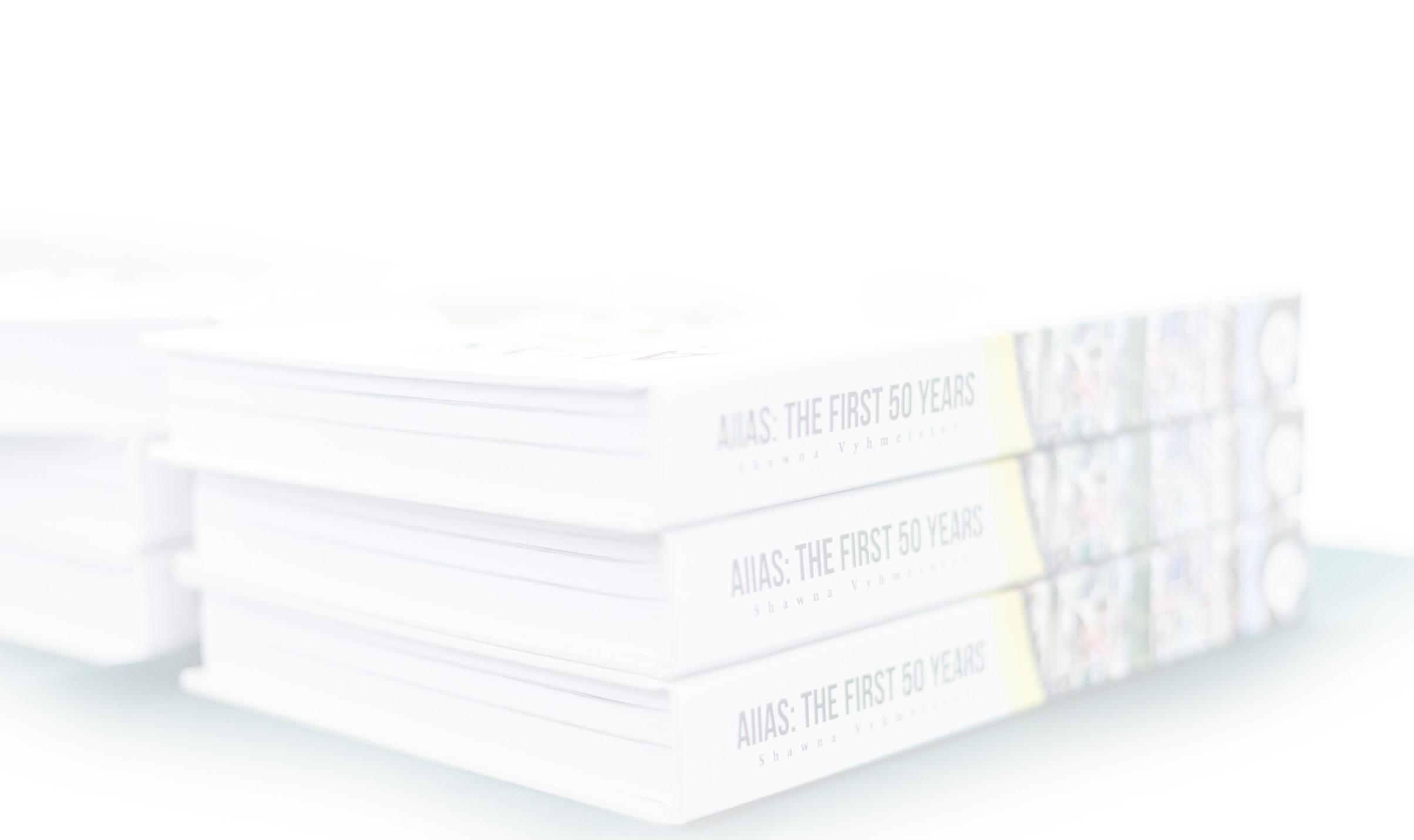
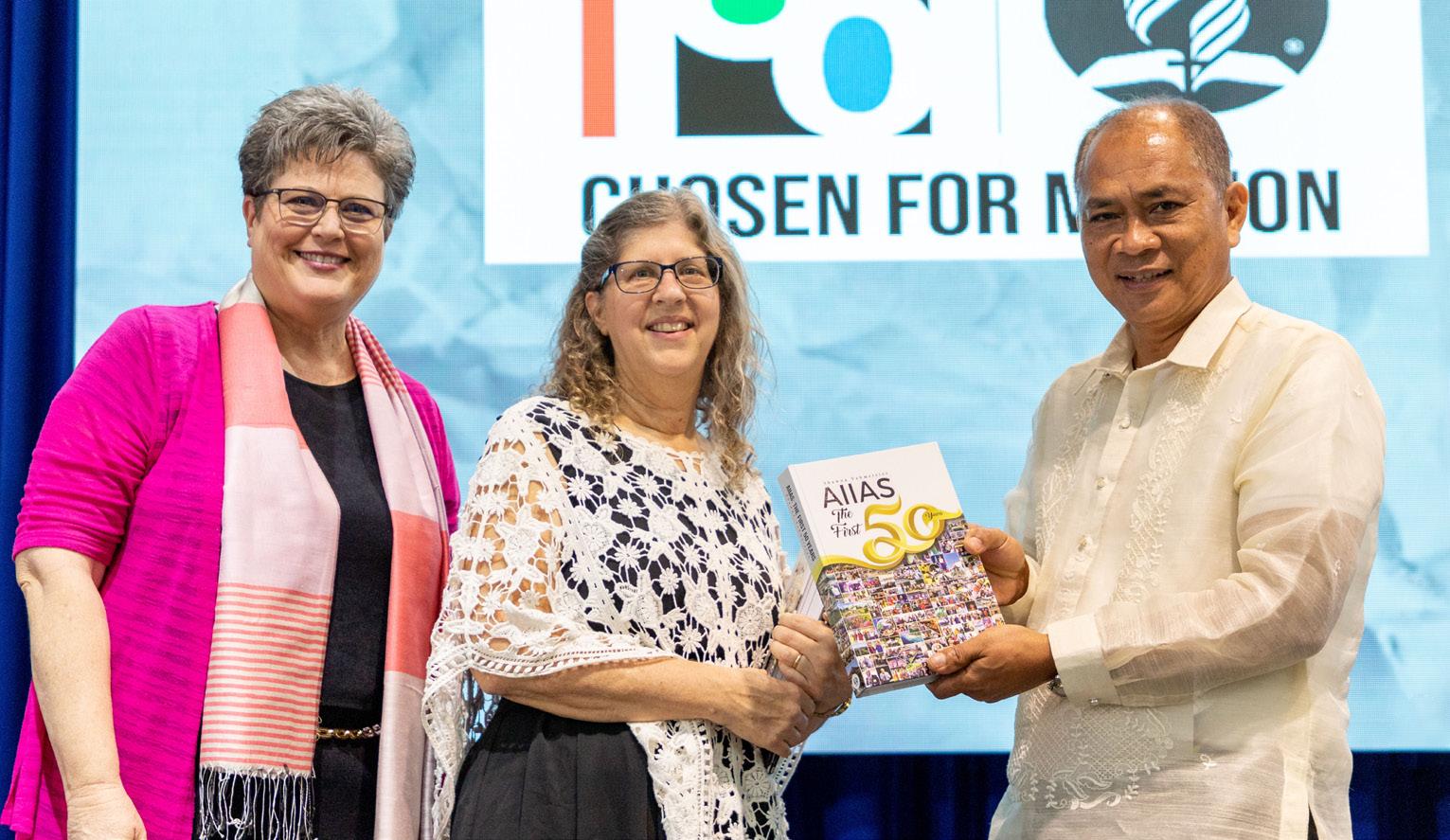
Showcased in separate sections are photographs of the campus during the early years, providing a view of how the current campus came to be. Photos of notable and traditional campus activities and the diverse international community that comprises AIIAS round out the collection. The photos document how AIIAS has grown from a small beginning to today’s beautiful campus.
The 317-page book is the result of the unselfish efforts of those who have passed through and currently serve at AIIAS. AIIAS is grateful to the Vyhmeisters for their continued support for AIIAS and for documenting this important history while pioneers and those who knew them are still available to share their stories.
“Got one copy today. The read was sparklingly golden! One shouldn’t miss reading part three of the book, miracles at AIIAS. For me, the best miracle is me, [that] God made me part of AIIAS,” shares Mamerto Guingguing, associate secretary of SSD.
AIIAS presses onward with its mission “to develop leaders through distinctively Seventh-day Adventist graduate education excelling in spirituality, scholarship, and service.” From 50 years ago to that day when Jesus returns, the mission continues.
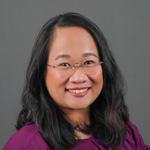
Sharnie Love Zamora-Belarmino, MBA, RN, is the editor of Flags. She serves as the assistantforinstitutionalwritingatAIIAS. ShecomesfromthePhilippines.
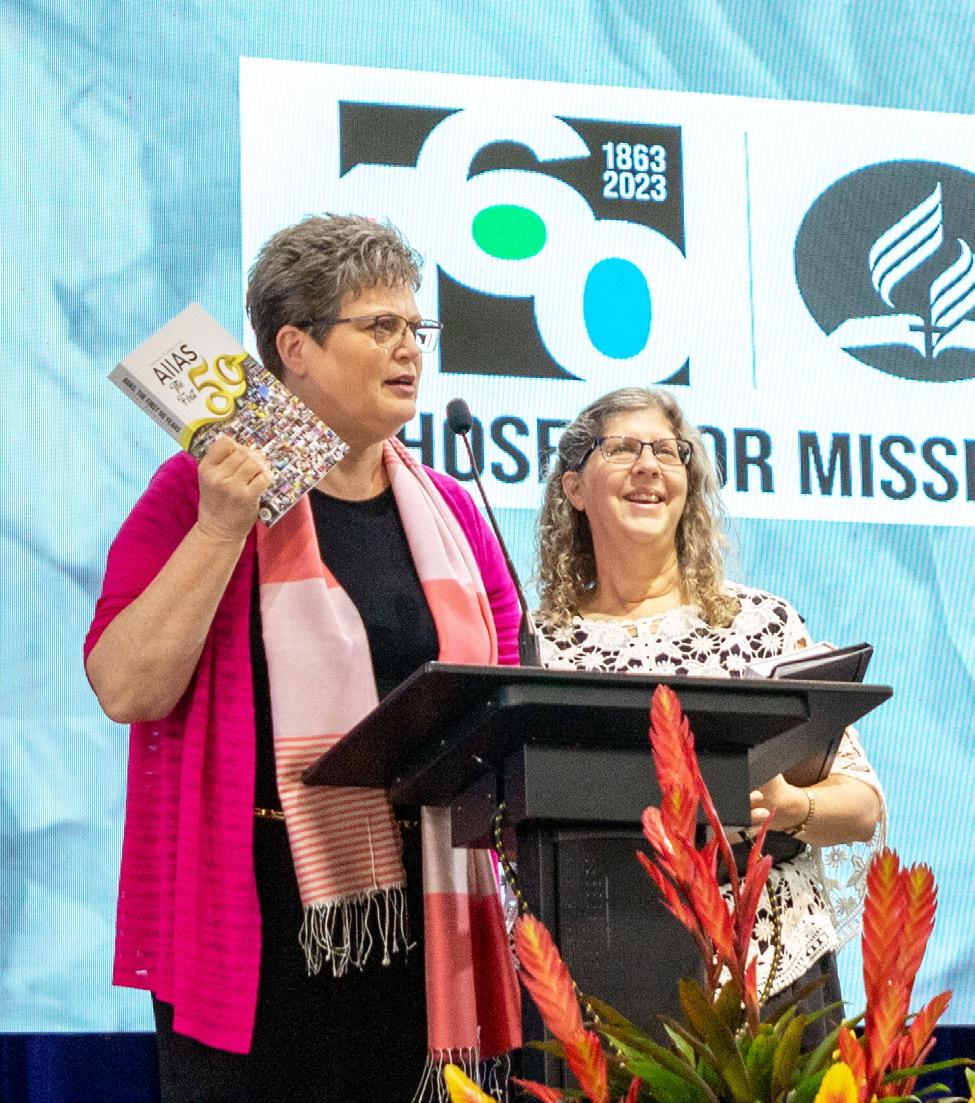
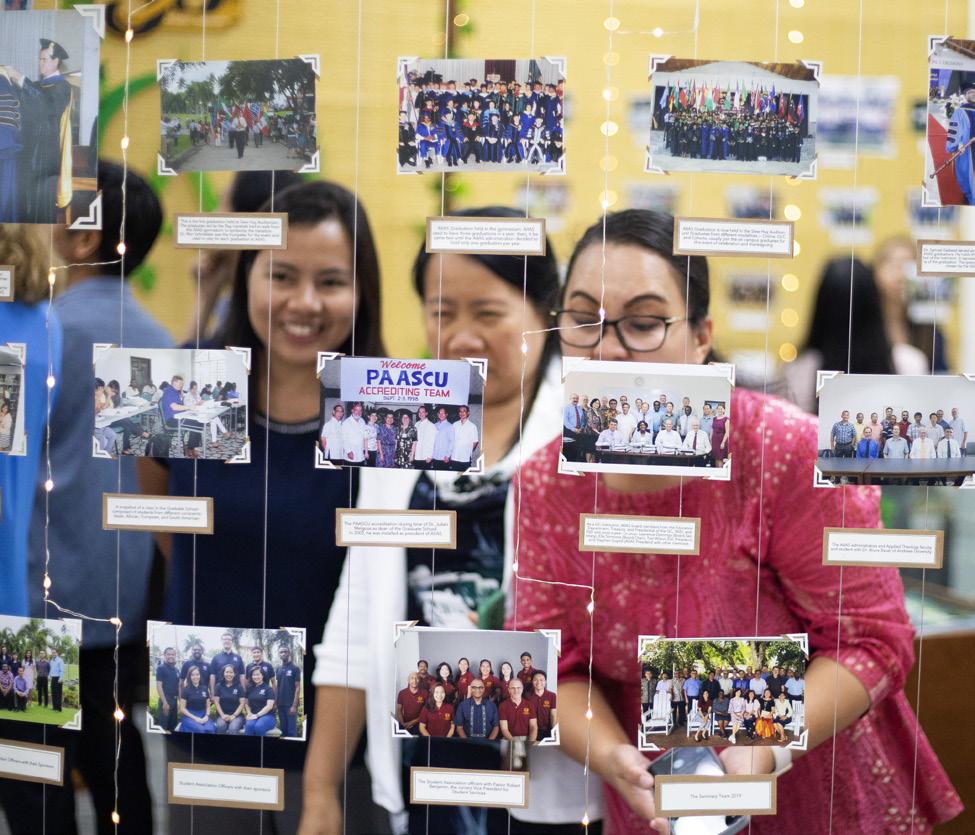
Celebrating 50 Years of God’s Faithfulness to AIIAS
By Sharnie Love Zamora-Belarmino
The year 2022 marked 50 years since the Far Eastern Division’s founding vote establishing the SDA Theological Seminary, Far East in 1972, on the campus of Philippine Union College. This event marked the beginning of AIIAS, the Division-operated graduate school. Instead of attempting an anniversary celebration last year under pandemic restrictions, AIIAS decided to postpone its celebration until 2023. This extension of the timeline also allowed the completion of the history book project, and allowed alumni, former faculty, and guests to come and join in the milestone festivities, which were held May 2-7, 2023.
May 2, Tuesday – AIIAS History Book Launch at SSD
AIIAS has published its first history book commemorating the events between the institution’s inception and the present. AIIAS: The First 50 Years was authored by AIIAS Education Department faculty member Shawna Vyhmeister. The book was first released during the 50th Founding Anniversary Celebration of AIIAS, beginning with a book signing event at the Southern Asia-Pacific Division Midyear Meetings on May 2, 2023.
May 3, Wednesday – History Exhibit Opening
The AIIAS Leslie Hardinge Library staff and the Physical Plant Department collaborated to set up a library exhibit featuring the historical shapers of AIIAS, the people that came to AIIAS through the years, the leaders that were developed as students at AIIAS, and how the place looked from its modest beginnings.
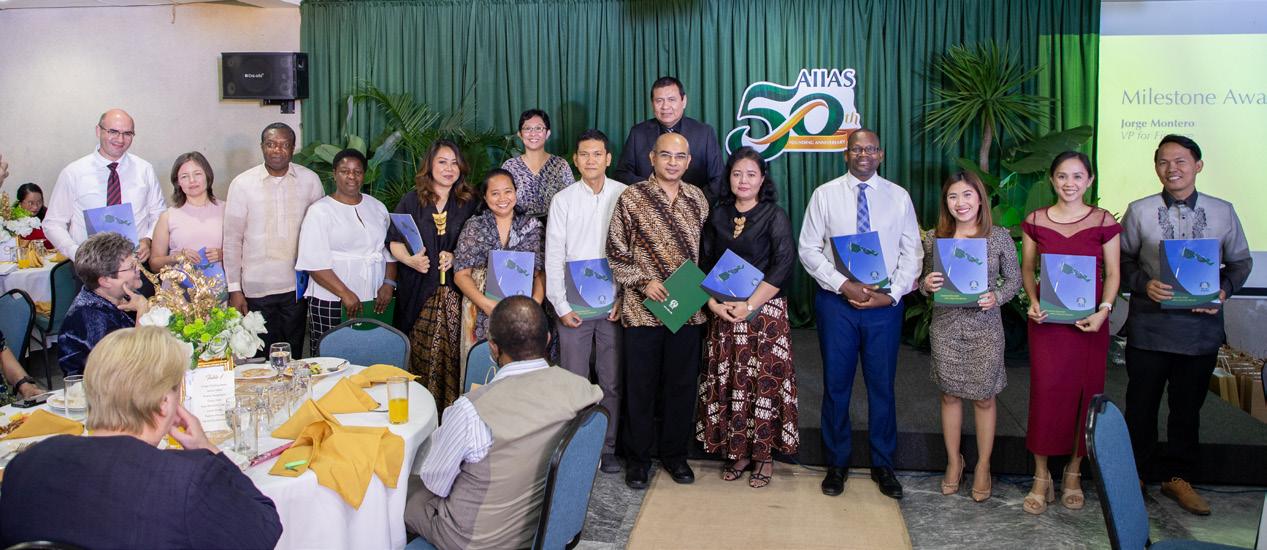
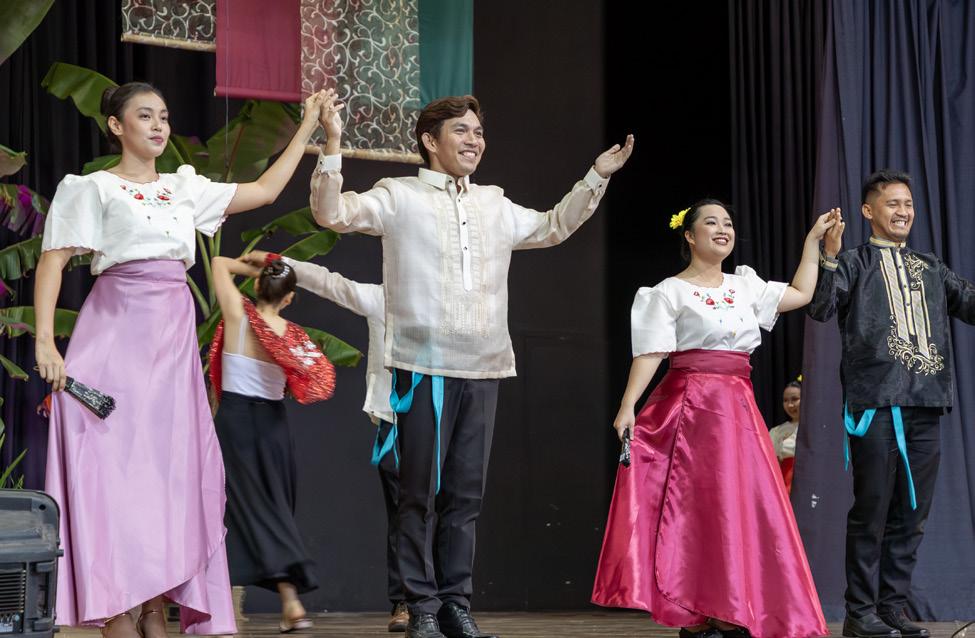
From what used to be a coffee plantation on a few hectares of land covered with coconut trees, AIIAS now stands with its beautiful Asian-themed architecture featured across campus. From humble beginnings, it has grown into a campus that serves as the temporary home of leaders both present and future, who come to upgrade their education to be better equipped for the work assigned to them.
Faculty, staff, and students celebrated the opening of the exhibit at the library lobby on Wednesday, May 3, 2023. As AIIAS President Ginger Ketting-Weller stated, “This exhibit is here to remind us that there were whole stories, complex people, problems, events, joys, celebrations, challenges, people born, people falling in love, and people mastering hardships. All of this was already happening before most of us arrived at AIIAS, but it’s part of the story of this institution.” She urged exhibit visitors to take note of the power of storytelling in pictures to help them feel like a part of the history from the beginning.
May 4, Thursday – Alumni Homecoming Dinner
The Alumni Homecoming Dinner provided a special opportunity to connect alumni with AIIAS employees, board members, and retirees, some of whom served at AIIAS from its first days as the Far Eastern
Division Seminary. Attendees were treated to a dinner with live music in a one-of-a-kind event for all that took part in the occasion.
During the banquet, the board chair shared the news from the board meetings with emphasis on the improvement of AIIAS. Advancements in rank were announced, milestone and service awards were presented, and faculty received their awards for scholarly achievements.
The event included a special focus on history through pictures and videos. Copies of the AIIAS history book were distributed to alumni and present and former faculty and staff. Stories were shared by board members, alumni, and retirees who served at AIIAS from the time it began in Baesa, Caloocan City, after its move to Puting Kahoy, and eventually as it developed in its current location in Silang, Cavite. Extemporaneous memories shared by former students and staff members became a highlight of the evening. Many observed that there should be a second history book, full of these personal anecdotes which were set in the context of the journey of AIIAS.
May 5, Friday – Campus Clean-up, Cultural Program, PNPA Silent Drill, and Health Fair
Early Friday morning, the AIIAS community gathered with their cleaning tools to collect all pieces of visible trash and dried-up foliage on campus. The participation of the volunteers was appreciated as they prepared the campus to be beautiful for the remainder of the weekend’s anniversary celebration.
A little later in the morning, campus residents and AIIAS Academy students gathered at the AIIAS Siew Huy Auditorium to witness a mini-
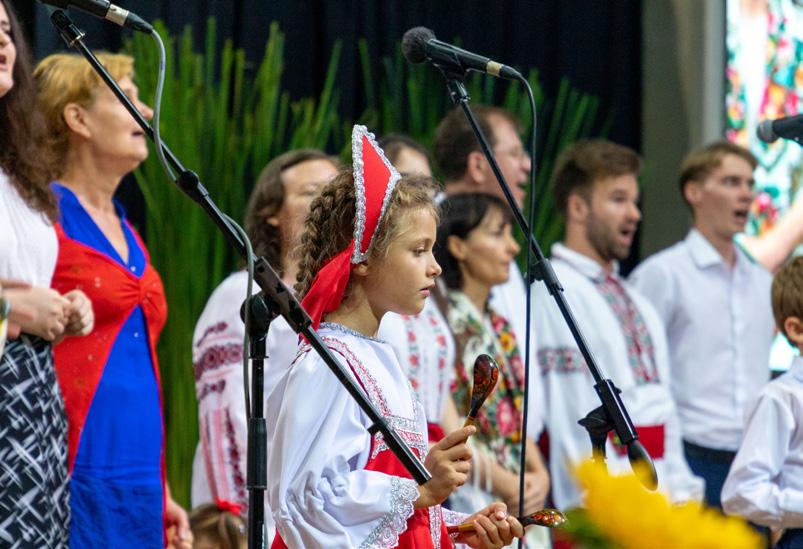
cultural show. The AIIAS Public Health Department hosted the event, which was put on in collaboration with the Student Association. Cheers of excitement arose from the crowd as each community showcased a bit of their culture through interpretative and folk dances.
Invited to join the AIIAS community for this event were the Philippine National Police Academy (PNPA) Batch 2024 Cadets under the direction of PNPA Chief of Staff General Alfredo Dangani and PNPA Director General Eric Noble. Following the cultural show, the cadets proceeded to the soccer field to present their slow drill exhibition. The cadets performed with grace and precision, demonstrating discipline through an organized routine and fancy drill work with their weapons. While bystanders watched, several young community members were allowed to carry an unloaded 4 kg rifle (with supervision), to demonstrate that the skills the cadets demonstrated are no easy feat.
Following the drill, the cadets were treated to a holistic Health Fair at the gymnasium. They were introduced to CELEBRATIONS, an acronym for 12 principles highlighting healthy practices: Choices, Exercise, Liquid, Environment, Belief, Rest, Air Temperance, Integrity, Optimism, Nutrition, Social Support, and Service. AIIAS students from both schools provided stations to explain the importance and application of each principle. Not only did the cadets demonstrate fitness, they also were treated to various activities that increased their knowledge about the importance of a healthy lifestyle, and strengthened their teamwork skills. They also enjoyed a relaxing massage, and took part in free counseling sessions ending with prayer.
As the day drew to a close, the auditorium came alive with the rhythms and harmonies of the music festival. Musically talented groups from the AIIAS community graced the stage throughout the evening. While some sang in their languages, others offered instrumental numbers. The event and participants portrayed one central message: gratitude for the goodness of God.
May 6, Saturday – Worship Celebration, International Potluck
To highlight gratitude to the Lord for His faithfulness throughout the 50 years of AIIAS history, a special Sabbath School service featured the pioneering leaders of AIIAS through an interview with panel members Bruce Sumendap, Richard Nelson, Nancy Vyhmeister, Shawna and Ronald Vyhmeister, Mi Hyang Song, and Evelyn and Reuel Almocera. The participants shared their experiences focusing on God’s goodness during their time.
During the Divine Service, AIIAS President Ginger Ketting-Weller’s sermon, “Still I Will Praise You,” began with a story about an experience she had as a 17-year old missionary kid traveling in Thailand. “Praise the Lord, the tractor’s broken” was the repeated theme as she related the story of Pat Gustin, a missionary at Chiang Mai Adventist Academy, whose plans were derailed after receiving news that the school’s tractor had broken, yet she gave praise to God. President KettingWeller encouraged worshipers to praise the Lord for hardships or disasters that may come into their lives. In order to do this, she stated, you have to hold three assumptions:
• Your life story is part of the bigger story of God. First, one must assume that one’s life
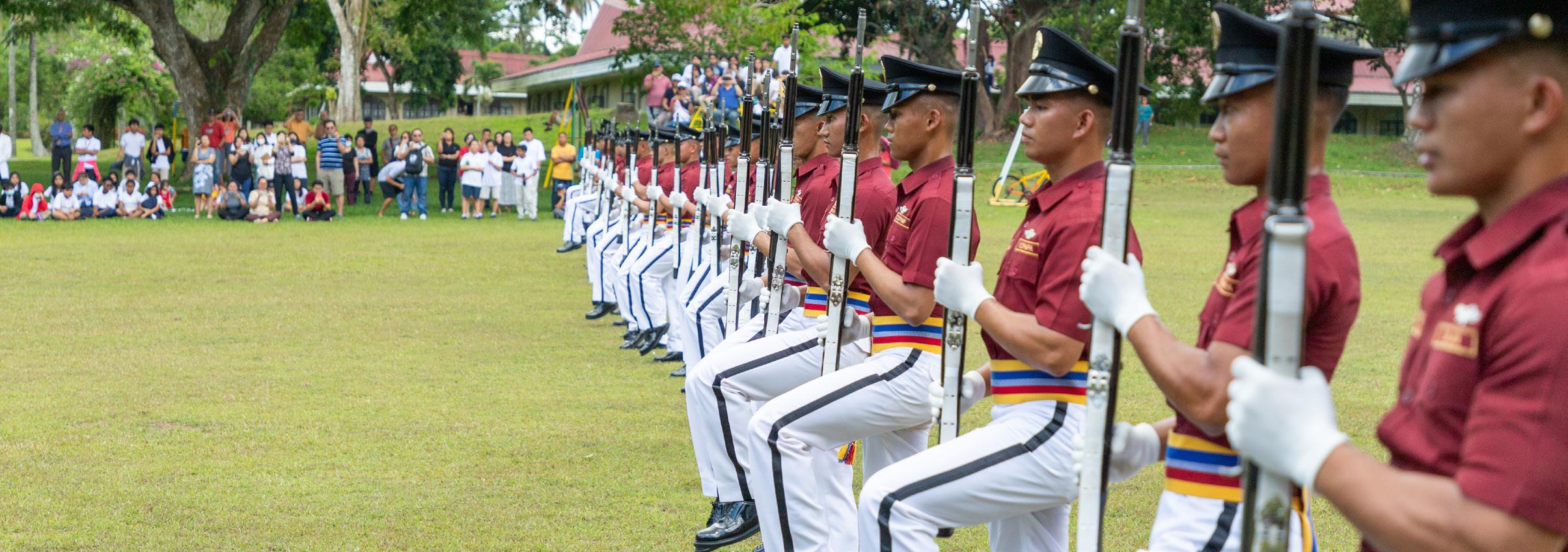
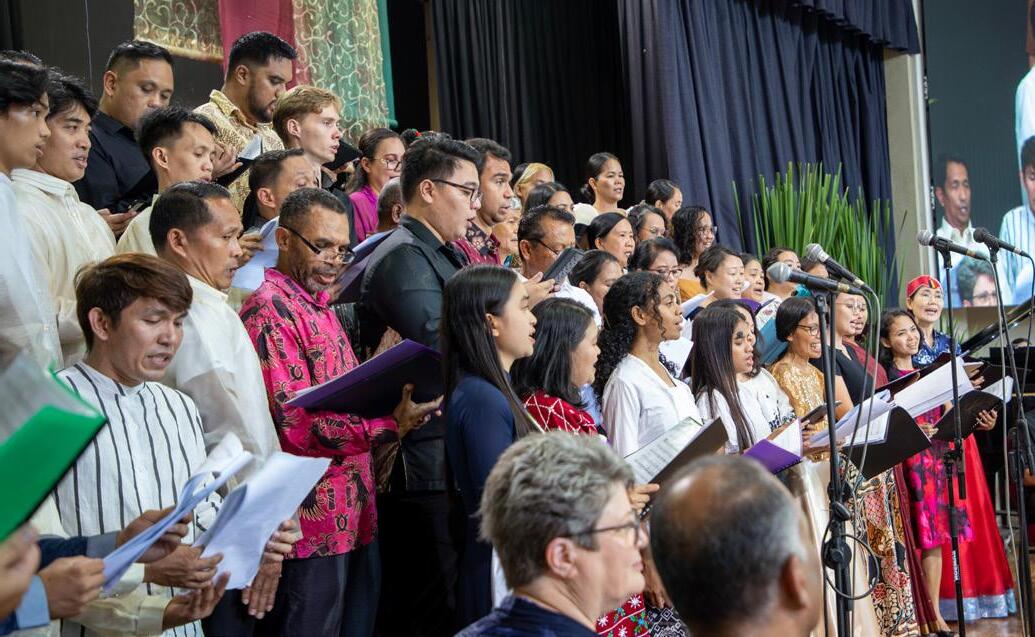
story is about what God is doing, not “what I am doing.” In every hardship or circumstance, it is important to focus on the question, “How?” more than the question, “Why?” How is God going to bring good out of a particular hardship situation?
• God’s story is full of hardships and crises. Second, the president provided an overview of God’s story as reflected in the lives of many Bible characters. She pointed out that their lives were full of mayhem, misery, and crises. Pairing this with the various challenges faced by AIIAS in recent years, she emphasized that as we understand the Great Controversy story, we know that AIIAS can also expect hardships and crises. They will come because the devil is a formidable foe, often stronger than we are, but not stronger than God.
• God’s story has a happy ending. Lastly, she pointed out that we know God’s story in the Great Controversy will end happily, and that too is the case for AIIAS, one of His institutions. She noted that even chapters in the story which contain crises will end happily. She noted that this had happened with the procurement of the Presidential Decree for AIIAS, discovered by AIIAS leaders nearly a year after it was signed

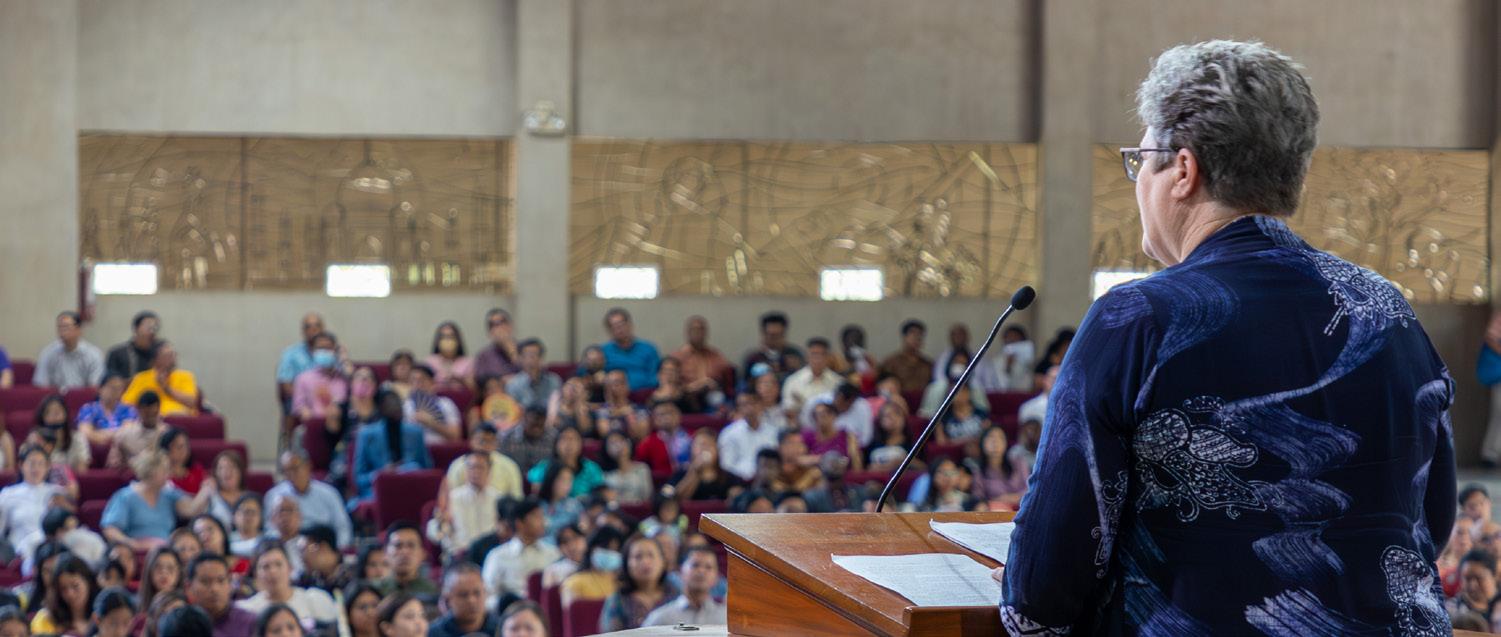
while they were starting to look to other countries for a better home for AIIAS.
Then she moved to a personal application of the message. “Just as Pat Gustin said, ‘Praise the Lord, the tractor’s broken,’ we can say ‘praise the Lord!’ Whatever it is, whether you’re in a time of hardship and crisis today, let Me remind you that God is faithful. . . [He says] your past and present are a preparation for your future with me. I am with you. Keep moving forward. Trust My promises. God’s story is full of hardships and crises, but God’s story has a happy ending.” The sermon ended with a special song by Himig, the AIIAS staff women’s trio, singing the song, “Still I Will Praise You.”
The Sabbath Service was followed by an International Potluck, a tradition at AIIAS where an array of dishes ranging from main dishes to salads to fruits and desserts were shared by each of the regional or national communities at AIIAS. Serving table themes ranged from African to South American, from Filipino to European, and more. An international potluck is a highly anticipated event for all who have been at AIIAS at any point in history.
May 7, Sunday – Milestones 5.0 Fun Run
To end the 50-year celebrations, Sunday morning’s Milestones 5.0
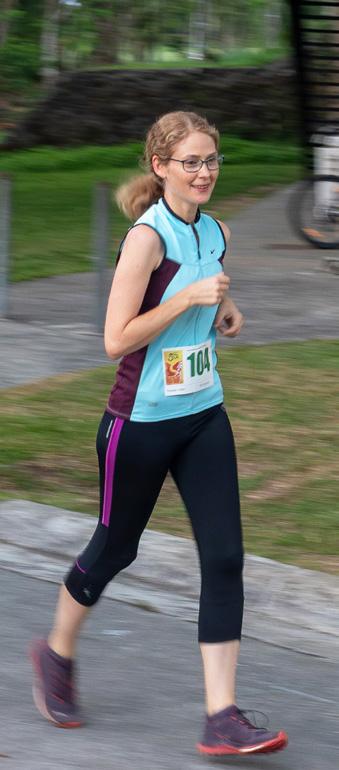
Fun Run was enjoyed by novices and seasoned runners of all ages. Families participated in the 5 kilometer and 5 mile walk/run around the AIIAS campus. Finishers received a shirt while all went home with souvenirs, photos, and happy memories of the event.
Celebrating the Past, Looking Forward to the Future
“There has been no one particular ‘Moses.’ Each leader, each person has contributed, has moved this institution forward. It is God who has been faithful to us,” said President Ketting-Weller. “In these 50 years, it is God who has built what has happened, and everybody else has contributed little bits and pieces to it.”
AIIAS gives special thanks to the entire AIIAS community for their participation and support in each of the activities, and to the organizers for their hard work in preparing for each event, making every activity worthwhile. In all these things, AIIAS gives the glory to God for His faithfulness throughout the last 50 years. What a joy it has been to celebrate, as AIIAS continues to develop leaders for God’s mission. AIIAS, press on!
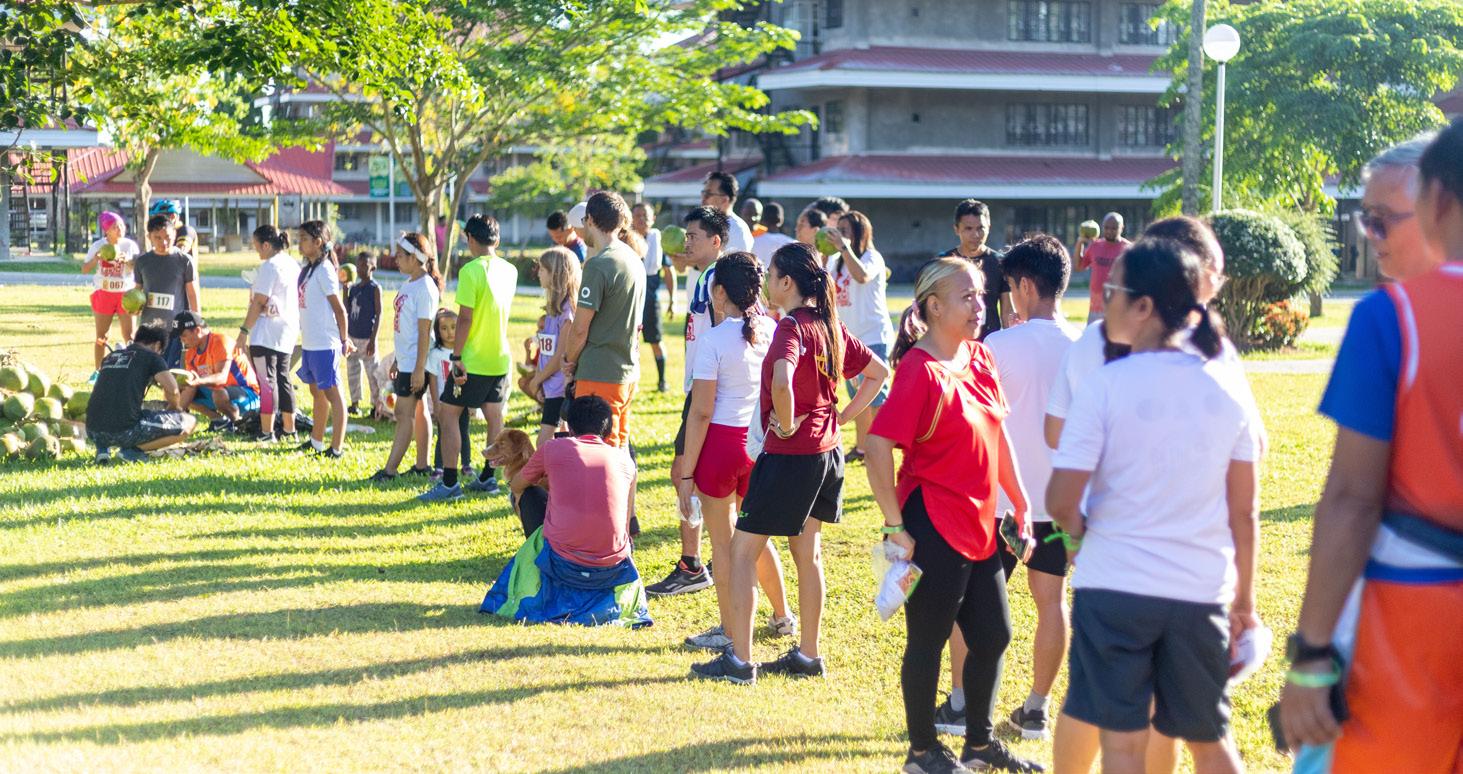
Sharnie Love Zamora-Belarmino, MBA, RN, is the editor of Flags. She serves as the assistant for institutional writing at AIIAS. She is from the Philippines.
alumni You Know You’ve Lived at AIIAS If . . .
By Shawna Vyhmeister, G. T. Ng, and Ginger Ketting-Weller
1. You have friends from at least 20 different countries.
2. Kimchi and durian don’t smell as bad as most people think.
3. You understand that rain can fall horizontally, not only vertically.
4. You can tell the difference between Chinese, Japanese, Koreans, Malaysians, Indonesians, and Burmese on sight.
5. You accept that Christmas music and decorations begin in September.
6. You have dozens of pictures on your phone of people standing by the bell tower.
7. You have dodged multiple flattened toads on the roads as you walk home from work or class.
8. You have relaxed about punctuality, knowing that time is not to be kept but to be enjoyed.
9. You can speak English with several authentic accents.
10. You have an enduring fondness for mangoes and for pancit.
11. You studied with classmates whose names you couldn’t pronounce.
12. You have heard English prepositions used badly so often that you yourself are now confused.
13. You have shopped for vegetables before breakfast.
14. Your metaphor for a school is an airport with people landing, going “through customs,” and taking off.


15. You leave your bicycle leaning against a wall and expect it to still be there when you get back.
16. You know that friendship and laughter know no international barriers.
17. You have learned that countries you never knew existed actually exist.
18. You have been known to laugh insanely when your friends test out their accents.
19. You have found your own research progress hampered by a professor’s trip to a DLC.
20. You have secretly wanted to own your own jeepney.
21. International flags flapping in the wind can bring tears to your eyes.
22. You own a rice cooker.
23. The smell of saltwater brings back incredible memories.
24. You, or people you know, have been invited to play table games at the Vyhmeisters’ or Guptills’ house.
25. You have been on a mission trip during a term break.
26. You have a healthy appreciation and respect for well-educated women.
27. Humidity is just a normal part of life.
28. You know that the greatest potlucks in the world happen at AIIAS.
29. 4:00 AM seems like a normal time to
begin a journey.
30. You know that you’ll never again be fully at home in your passport country.
31. You can recognize a Korean down the hall and around the corner just by listening to the conversation.
32. You have learned to smile and shrug your shoulders in resignation when a wedding begins more than one hour late.

33. You know how to say “good morning” in ten languages.
34. You know several ways to enjoy guyabano.
35. Embarrassment makes you smile.
36. You say “sorry, po” to complete strangers and they look at you funny.
37. You have limped to class on the Monday after Mini-Olympics.
38. You know that adults ride tricycles.
39. You know that if you smile big enough and pull out slowly, you can turn left across 3 lanes of traffic.
40. You have experienced the joy of being serenaded at 4 AM.
41. You know that the orioles sing their most piercing, melodious calls on Sabbath mornings in the narra trees.
42. You resisted joining the singles club, but then you did, and now you’re not single anymore.
43. You have dreams that include Cultural Night.
44. You know that a smile is truly a universal form of communication.
45. You can authoritatively discuss the relative merits of different airports in the region.
46. You almost miss typhoon warnings when the season is past, and visit weather disaster websites when hearing of such events happening back in the Philippines after you’re gone.
47. You think nothing of knocking on the door of your professor’s home to ask a question.
48. You have at some time asked for medical advice from doctora Almocera.
49. You have been known to study in the library just to take advantage of the air conditioning.
50. You understand what the Bible means when it talks about the “great multitude” (Rev. 7:9) coming from “all nations, tribes, peoples, and tongues.”
What AIIAS Is to Me
By Arceli Rosario, July 19, 2022
AIIAS is to me a home Where my voice in laughter blends With many other voices that echo The beating of my heart. Where others carve a space That I can claim my own.
AIIAS is to me a school Where the torch of knowledge Is lit and lifted. Where my endless march Matches with the thud Of a thousand other marchers.
AIIAS is to me a church Where the face and voice Of the Infinite One Are visions of joy and hope. Where love is a touch From which springs life.
AIIAS is to me a heaven Where the glitter of this earth Is dimmed by the glorious splendor
Of the harmony of the saints. Where their melodic chorus Swells to the gates of eternity.
AIIAS is to me all these— And even more. For, to me, AIIAS is a gift To treasure and to cherish Now and ’til forever.
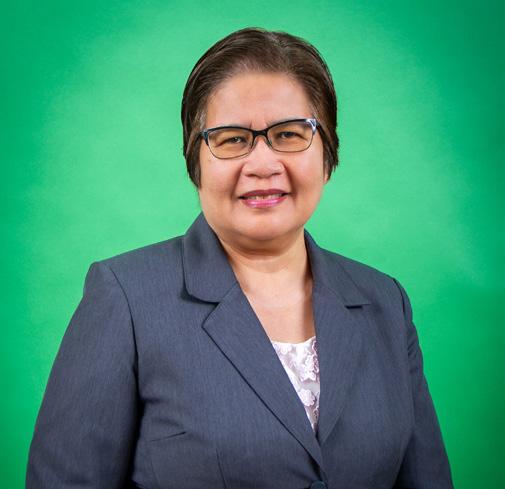
A Part of AIIAS
By Shawna Vyhmeister, Sept 20, 2023
To be a part of AIIAS is to feel That you are the hands and feet of Christ in your community, And that your community Stretches all the way around the globe.
It is to know that, Though this is a big responsibility, It is also a two-way street: That same global community will also be there To pray for you and help you in your time of need.
To be a part of AIIAS is to know personally That the great God who watches over AIIAS Is also watching over you, And that there is nothing you and He cannot accomplish As long as you work together.
It is to be convinced That family is not limited to people from your country or your blood line: People from half way around the world Can be closer than brothers, And family sometimes will not understand you.
To be a part of AIIAS is to see God’s mission as your real purpose in life, and everything else as just details.
It is to understand that, Though no one else may notice, And though there is no guarantee of wealth or long life or success in human terms, God knows; He cares; and He is the only one you must answer to.
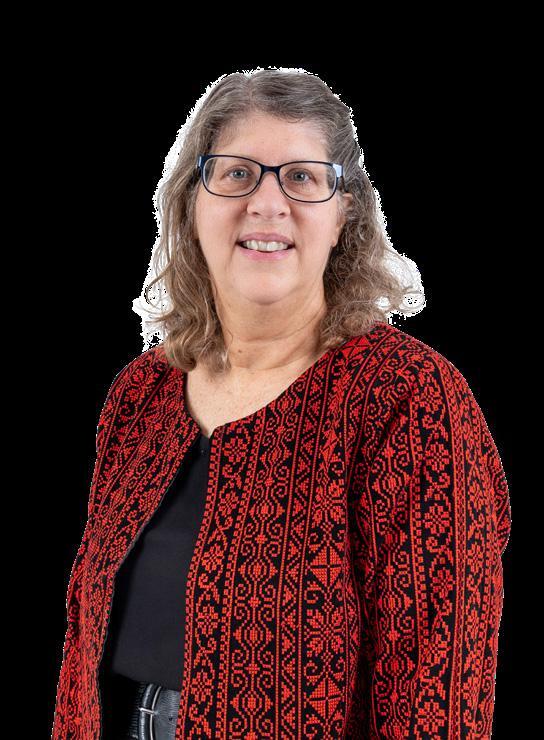
Arceli Rosario, PhD, is the president of the Adventist University of the Philippines in Silang, Cavite. She served at the AIIAS Education Department as a faculty member (2012-2022) and chair of the department (2016-2022).
ABOUT AIIAS
The Adventist International Institute of Advanced Studies (AIIAS) is a graduate-level Seventh-day Adventist educational institution that offers quality education while keeping the tuition very affordable. AIIAS provides four modalities: online learning, extension sites, on-campus cohorts, and full-time programs.
AIIAS is located on a beautiful tropical campus 45.5 kilometers outside of Manila, the capital city of the Philippines. This location offers easy access to local and international opportunities for mission trips within the 10/40 Window.
The AIIAS community includes over 300 graduate students from more than 60 countries around the world. The faculty members come from 17 different countries. The teacherstudent ratio is low, giving students the opportunity to work closely with their teachers. Typically, a class of 10 students will represent a variety of nationalities, providing access to diverse insights and global perspectives.
AIIAS alumni hold positions of leadership throughout Asia and the world. Alumni serve as teachers, pastors, world church leaders, university presidents, administrators, business executives, NGO leaders, and public health professionals. Many of these alumni have come to AIIAS to build a strong foundation on excellent, world-class graduate education.
RECOGNITION & ACCREDITATION
AIIAS is recognized by the government of the Republic of the Philippines as a graduate educational institution of international character, as certified by the Commission on Higher Education (CHED) pursuant to Presidential Decree No. 2021. The institution and all its programs are accredited by the AAA1. In addition, the graduate school programs are accredited by PAASCU2 and those from the seminary by ATESEA3
1 The Adventist Accrediting Association of Seventh-day Adventist Schools, Colleges, and Universities of Maryland, USA.
2 The Philippine Accrediting Association of Schools, Colleges and Universities which is a full member of APQN and INQAAHE.
3 The Association for Theological Education in South East Asia which is a full member of WOCATI thereby networked with other regional associations like the ATS.

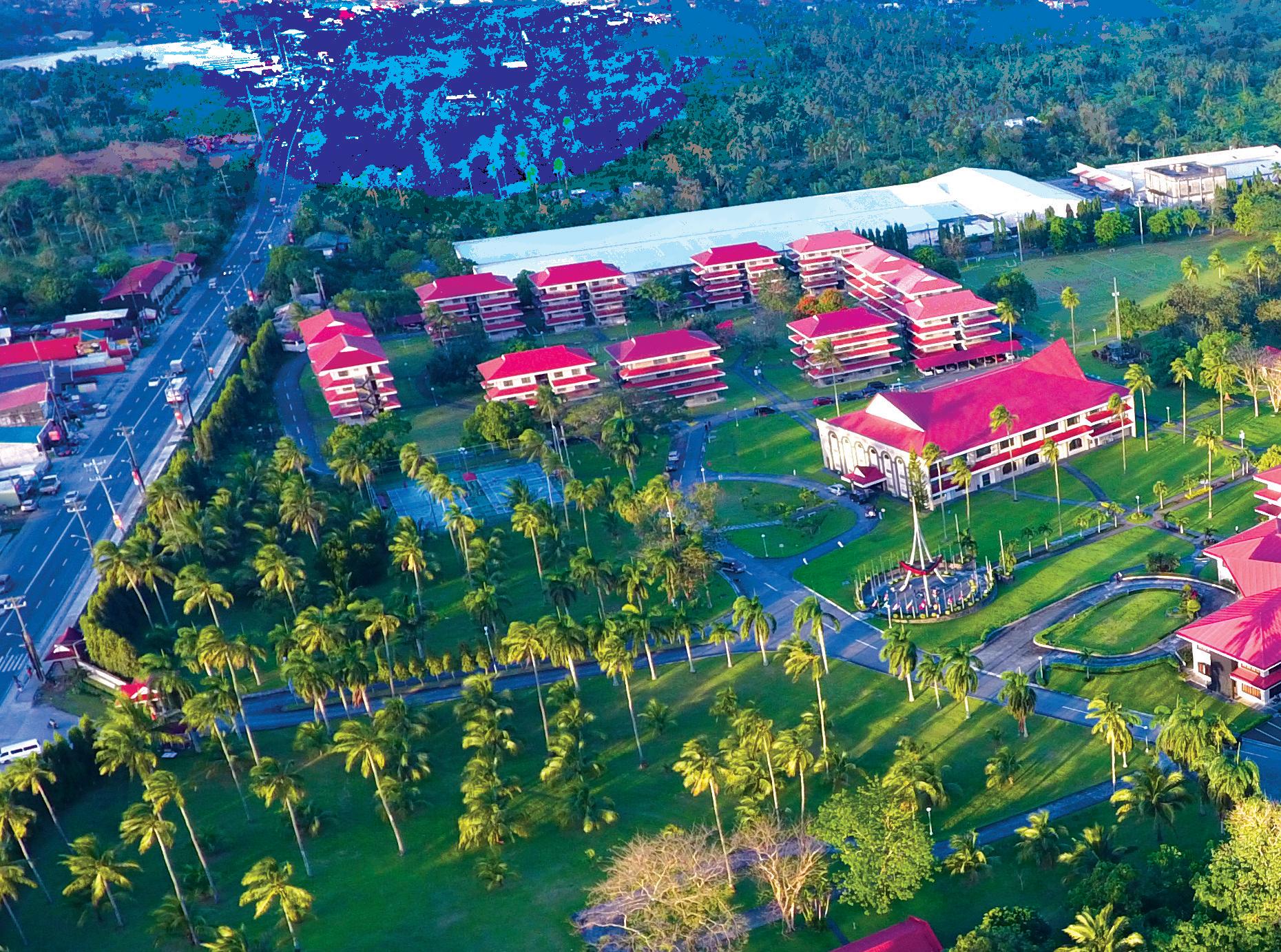
THE AIIAS ADVANTAGE
In addition to high quality graduate education, there are many benefits of living on a campus filled with fellow students and their families.
“AIIAS provides a wholesome experience by developing each person academically, spiritually, mentally, and physically.”
Living on campus provides rich cultural experiences among a diversity of friends, thoughts, and activities. The AIIAS student will meet fellow students from every continent except Antarctica. The diversity allows students to find commonalities and gain knowledge from other cultures.
AIIAS cultivates a family-friendly environment where children of different age groups from various countries interact and freely play together. This experience develops cultural awareness and appreciation at an early age. The community allows parents’ peace of mind about their children’s safety as they focus on studying, for the walled campus has a secure entrance.
ADMISSION DEADLINES
Second Semester – Term A December 7, 2023
Second Semester – Term B February 13, 2024
Intersemester 2024 April 23, 2024
First Semester 2024-2025 July 5, 2024
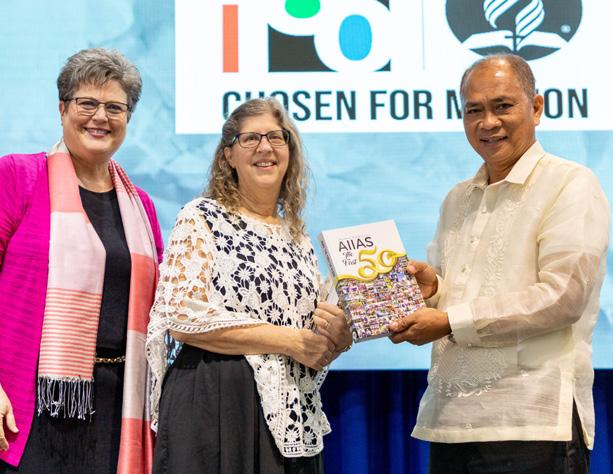
AIIAS provides an abundance of opportunities for spiritual growth, whether it is through prayer meetings, Sabbath worship programs, or outreach ministries off-campus. There are many other opportunities that allow students to receive a blessing, and be a blessing.
GRADUATE SCHOOL
The AIIAS Graduate School develops internationally-minded, serviceoriented professionals known for integrity and scholarship in the fields of business, education, and public health.
THEOLOGICAL SEMINARY
The AIIAS Theological Seminary prepares mission-driven, professional faculty and other church leaders in a wholistic, multicultural, and collaborative approach to learning, promoting biblically-informed scholarship, spirituality, and a meaningful field experience.
ENGLISH CENTER
The AIIAS English Center takes students through intensive and personalized instruction in the English language in an English-speaking environment. The English Center approach is aligned with well-recognized English language programs.
ONLINE
AIIAS Online delivers quality graduate Christian education that is accessible and affordable through student-centered and contextualized learning experiences for better service to the church and society.
Why Choose AIIAS?
Distinctively Adventist
AIIAS champions the educational philosophy, teachings, and lifestyle of the Seventh-day Adventist Church and its clear sense of mission and identity.
Academic Excellence
AIIAS maintains the highest levels of academic quality and accreditation, employing outstanding faculty who are well-recognized in their fields.
Affordable Cost
AIIAS students enjoy high quality education at an affordable price thanks to the financial subsidy provided by the Adventist world church.
Exotic Location
Dive to undisturbed coral reefs, enjoy unspoiled tropical beaches, or shoot the rapids. All these activities can be enjoyed a short distance from the AIIAS campus.
Mission-Oriented
Being strategically located in the Philippines, AIIAS provides ready access to the 10/40 Window for field experience and research opportunities.
Excellent Supporting Resources
An exemplary graduate research library with a collection of more than 80,000 volumes means easy access to a growing gold mine of library resources.
Alumni Impact
AIIAS alumni have become well-equipped leaders around the world and are committed to the church and its mission.
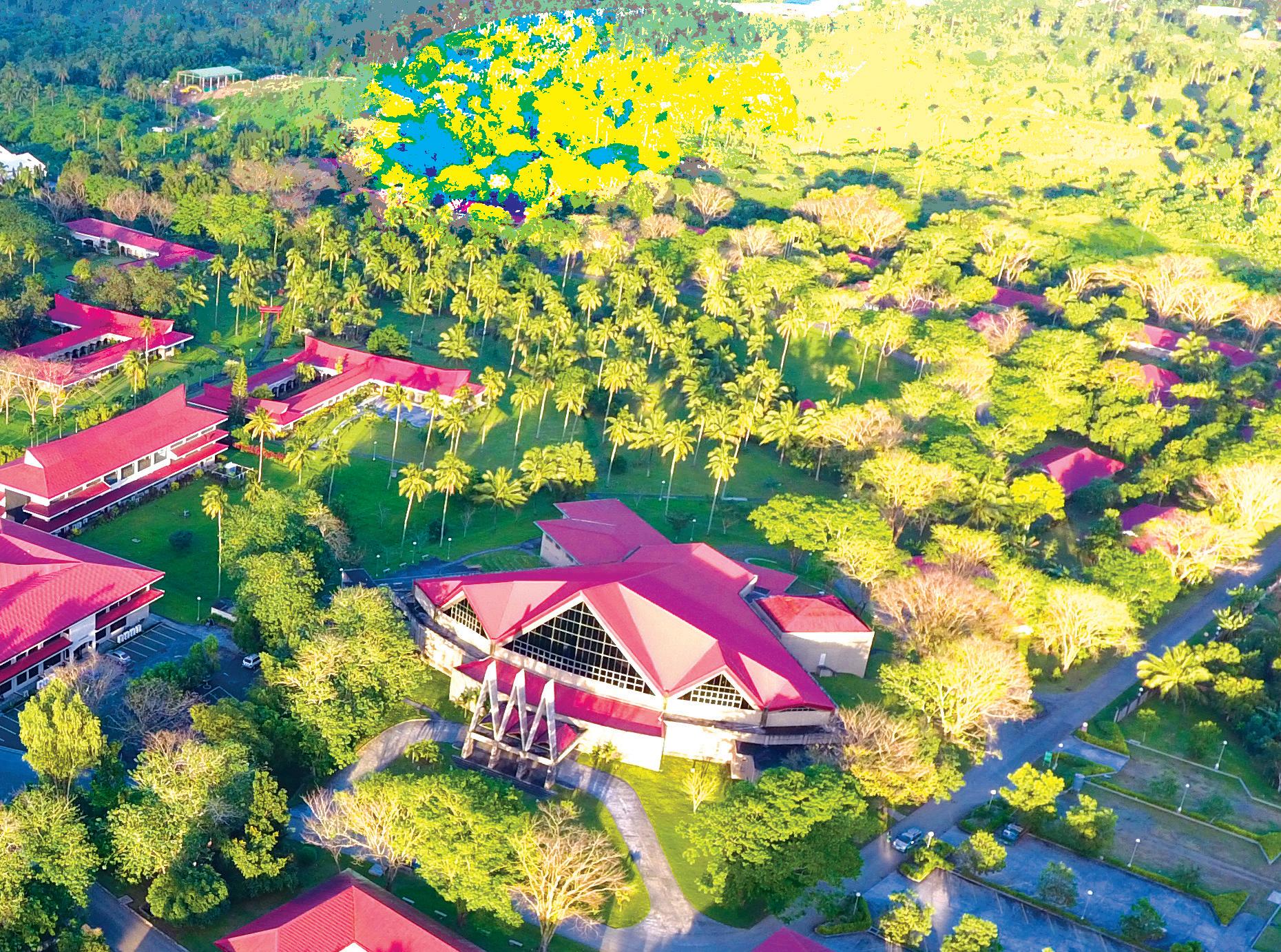
www.aiias.edu online.aiias.edu facebook.com/aiias twitter.com/aiiasedu instagram.com/aiiasedu
admissions@aiias.edu online@aiias.edu Operated by the
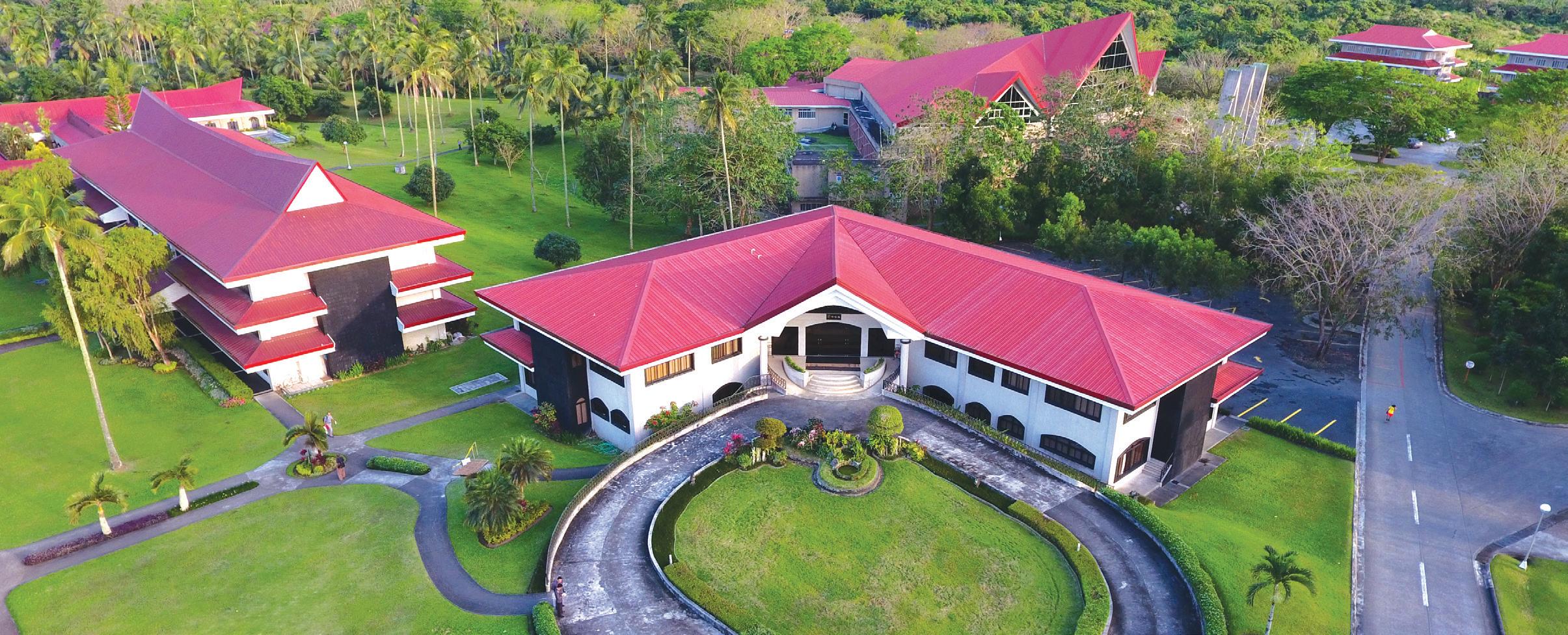
AIIAS Program Offerings
GRADUATE SCHOOL
Business
Master of Business Administration (MBA)*
Master of Science in Administration (MSA)*
Doctor of Philosophy (PhD) in Business
Education
Master of Arts in Education (MA)*
Education Specialist (EdS)
Doctor of Philosophy (PhD) in Education*
Public Health
Master of Public Health (MPH)*
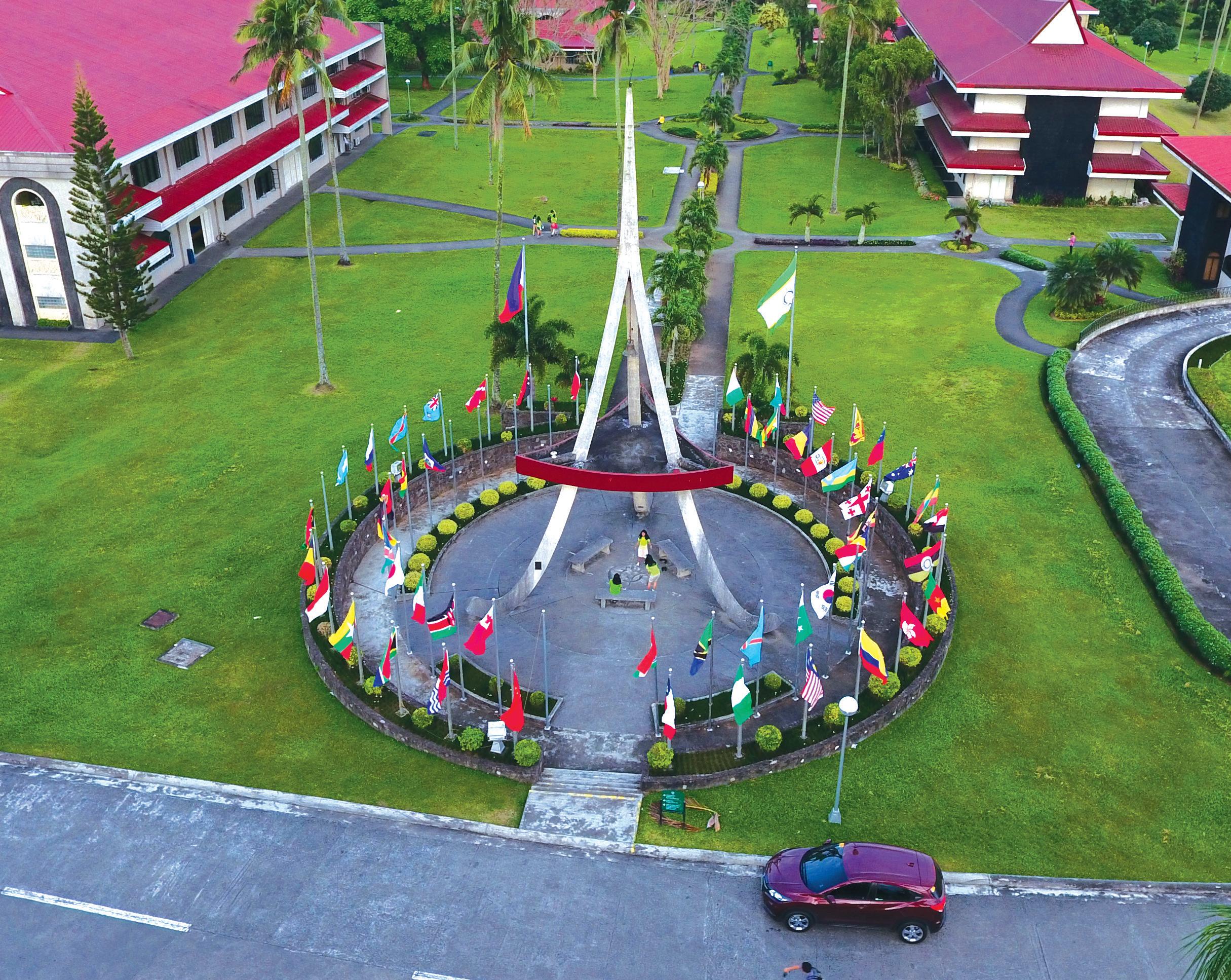
THEOLOGICAL SEMINARY
Professional Programs
Master of Arts in Church Ministry (MA-CM)*
Master of Divinity (MDiv)*
Master of Arts in Ministry (MA-Min)
Doctor of Ministry (DMin)
Doctor of Missiology/Doctor of Intercultural Studies (DMiss/DIS)
Academic Programs
Master of Arts in Religion (MA-R)
Master of Theology (MTh)
Graduate Education with a Heart for Mission *also offered Online
Doctor of Philosophy (PhD) in Religion
